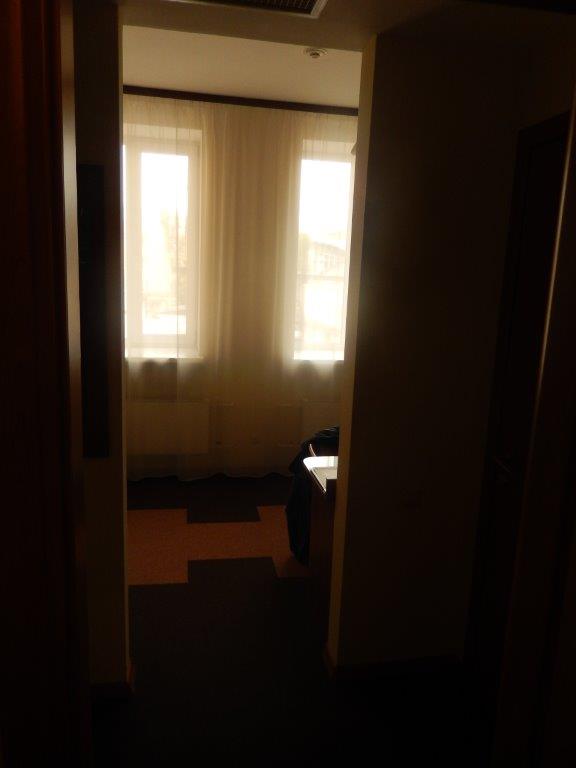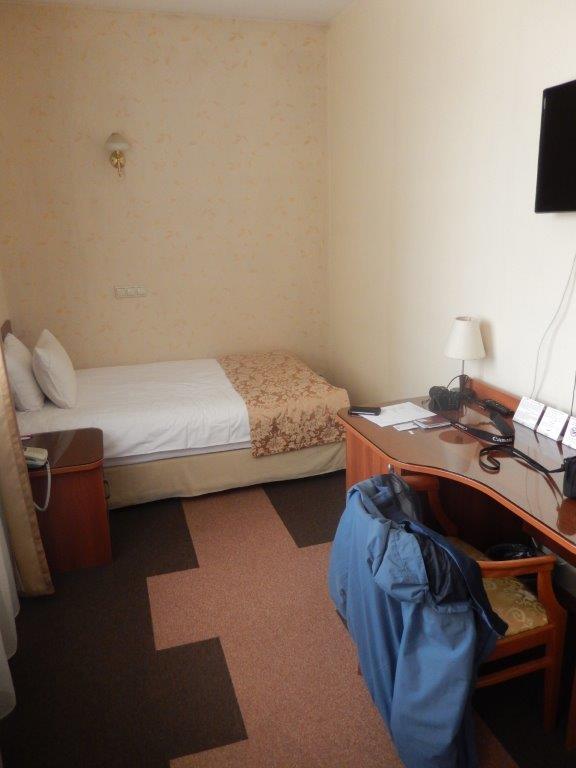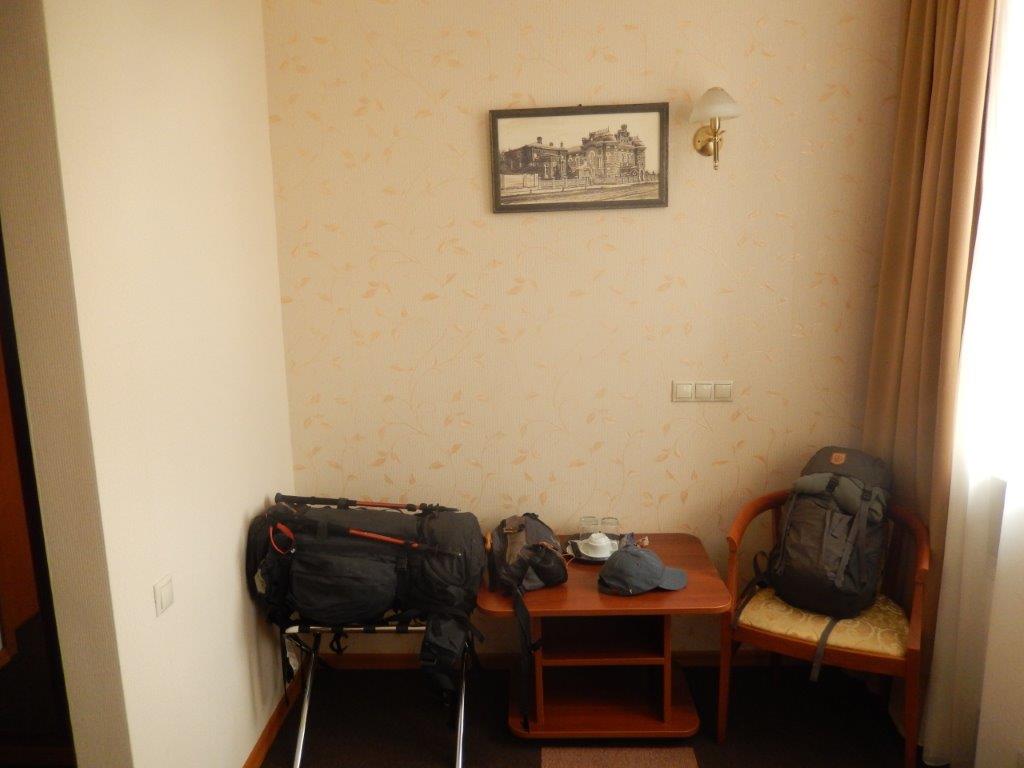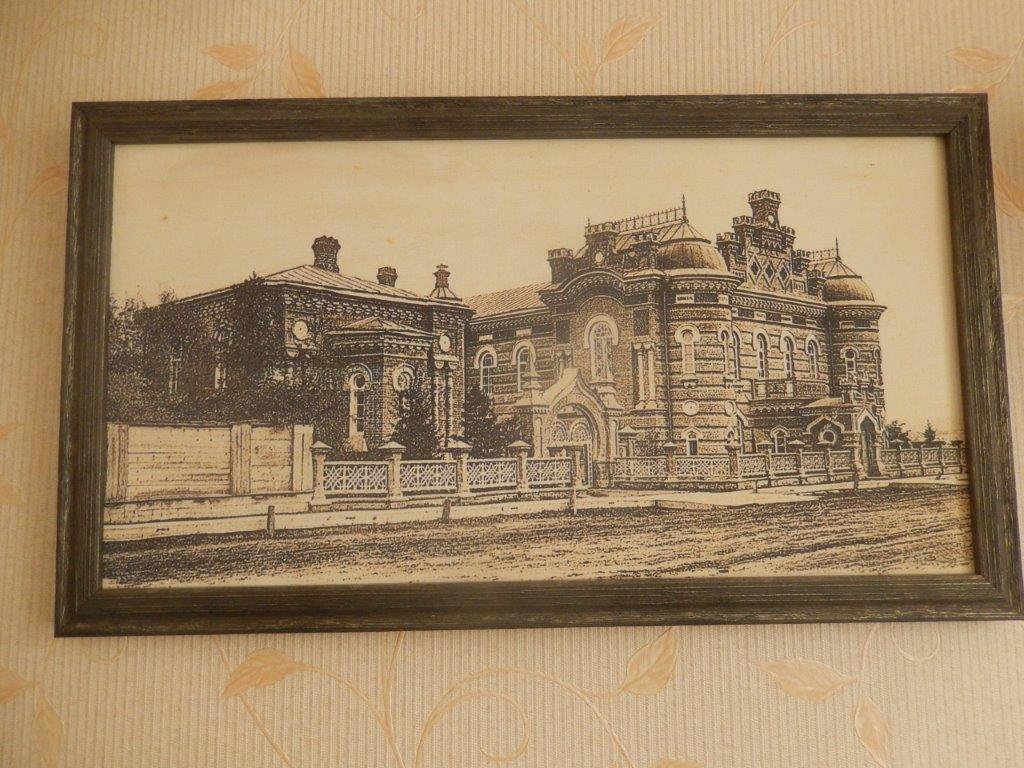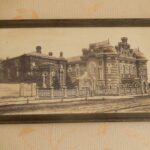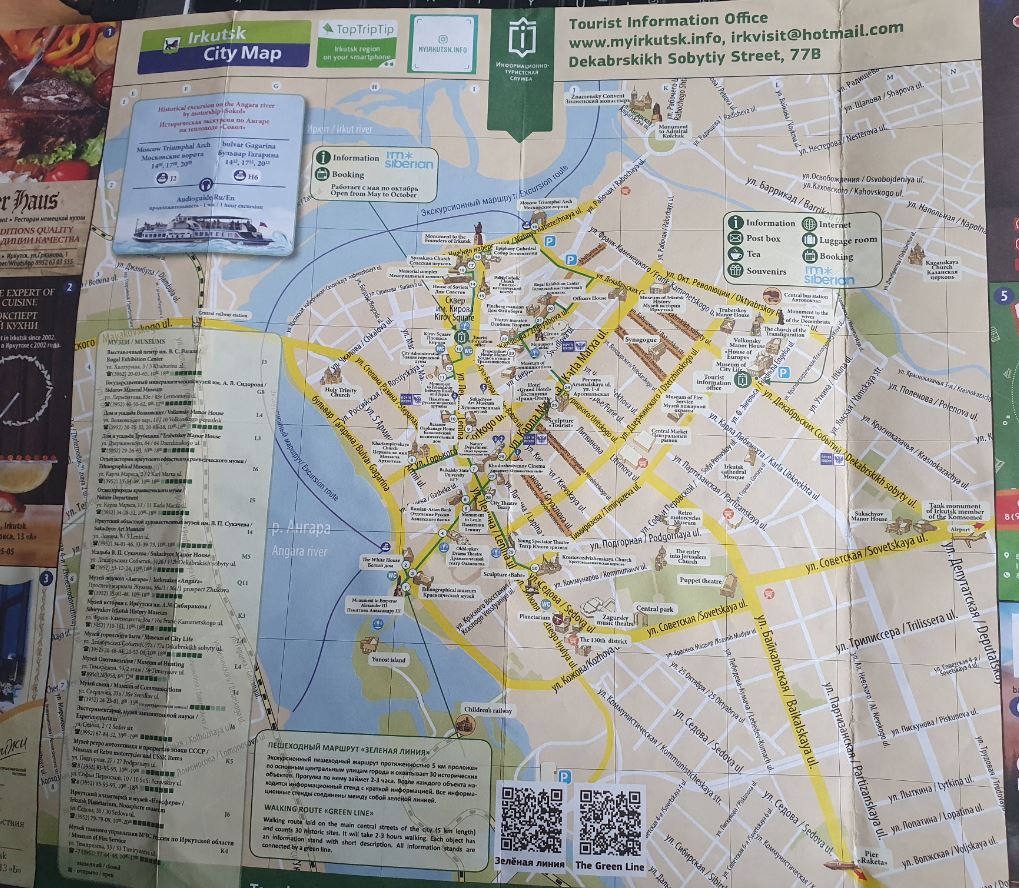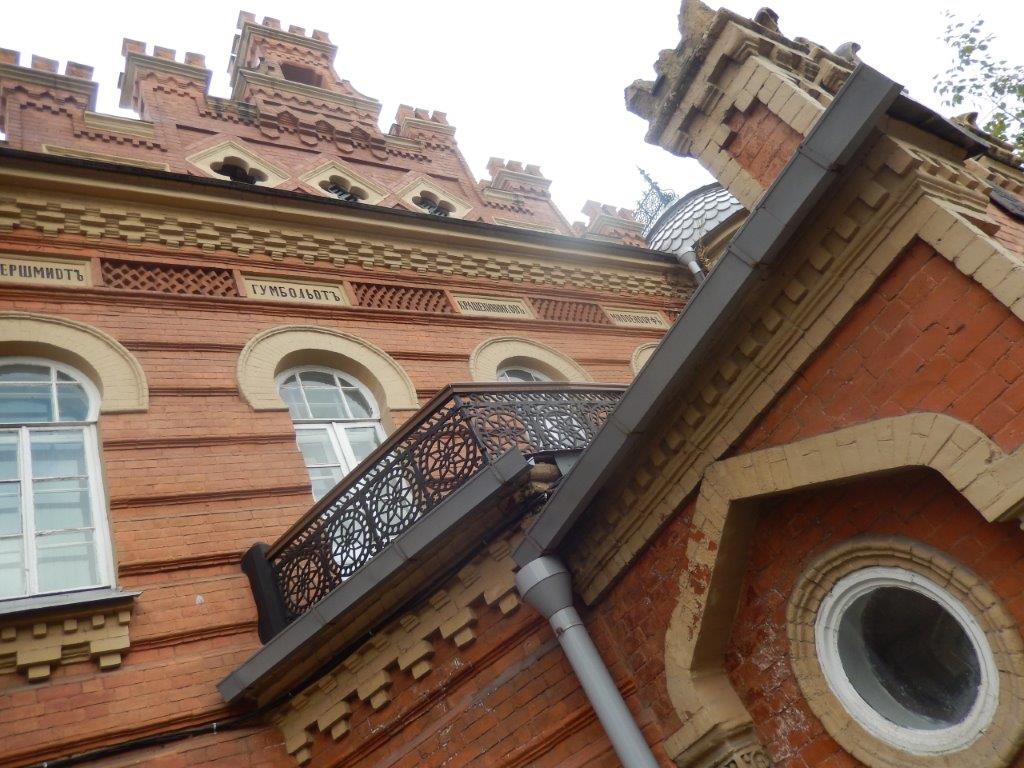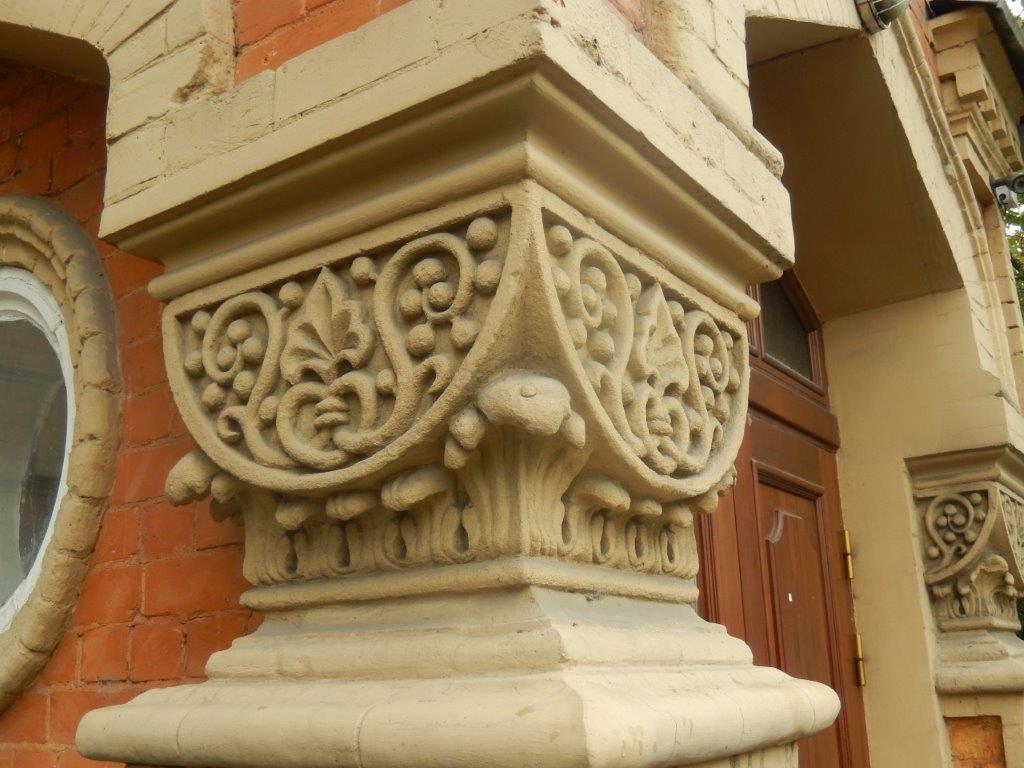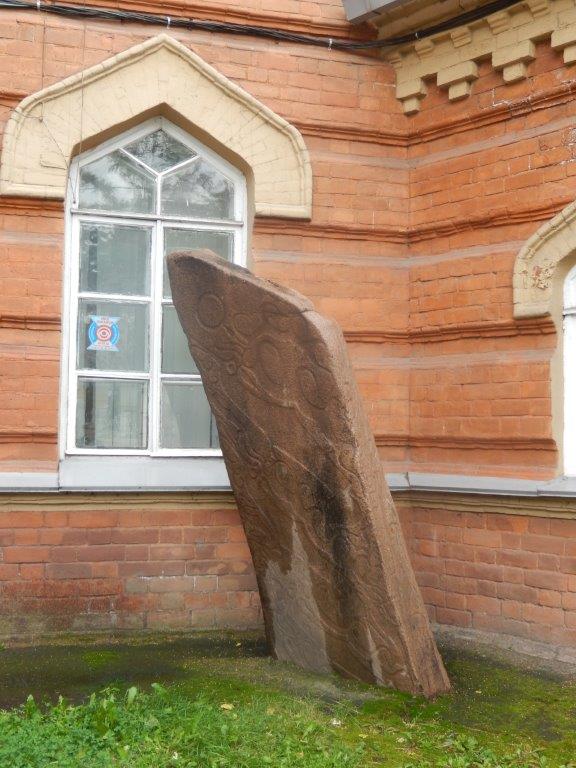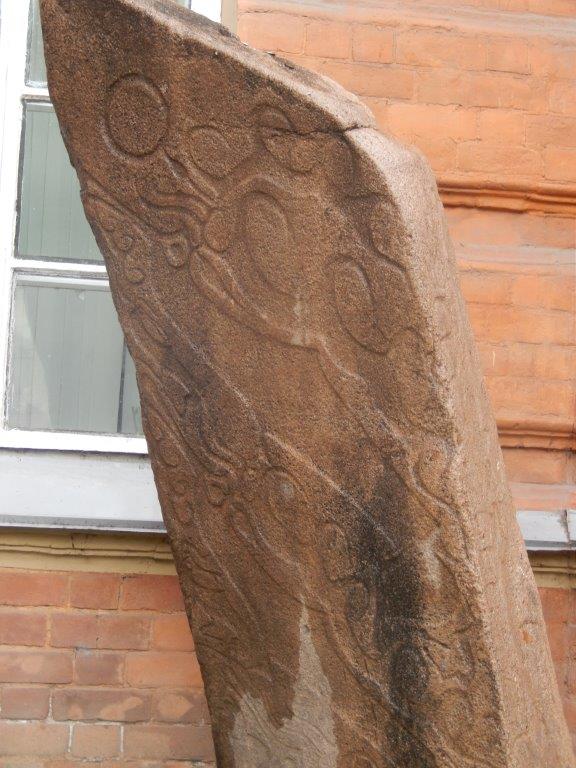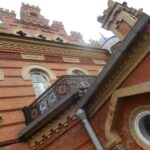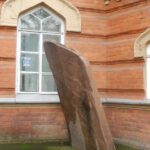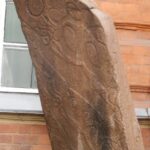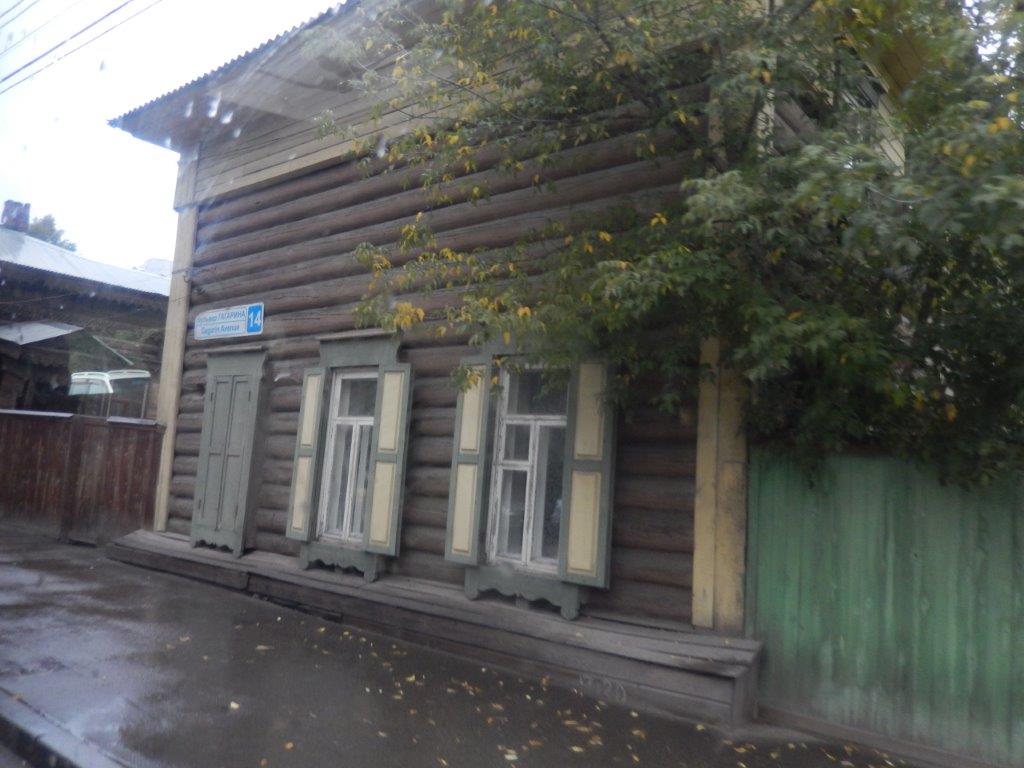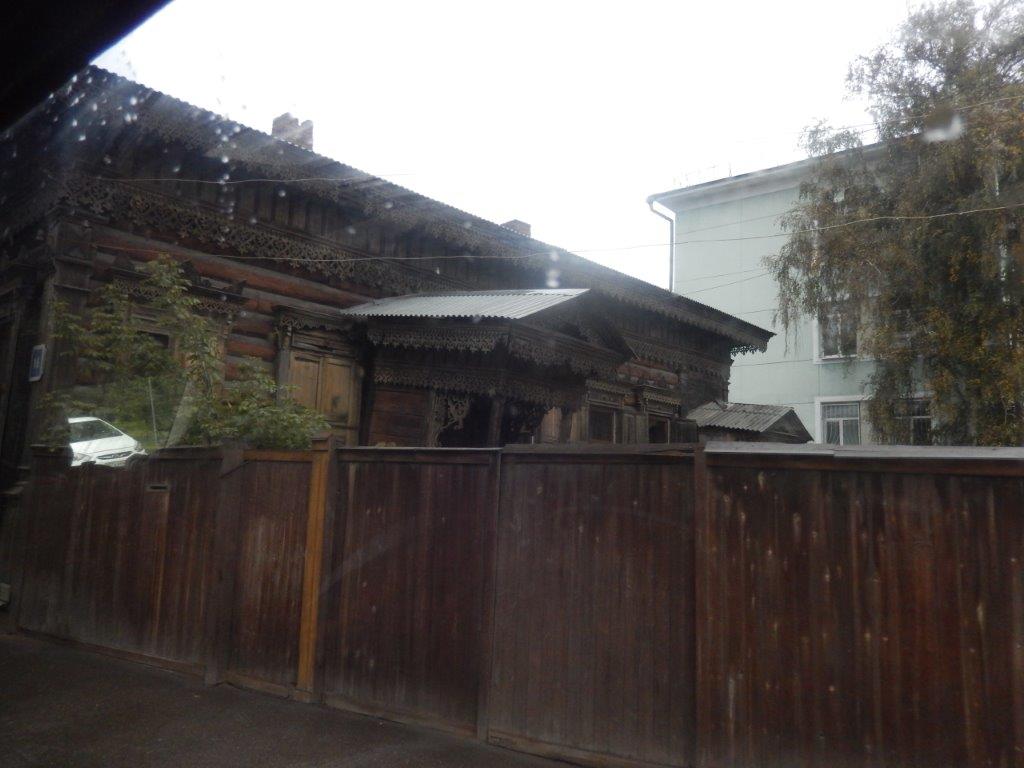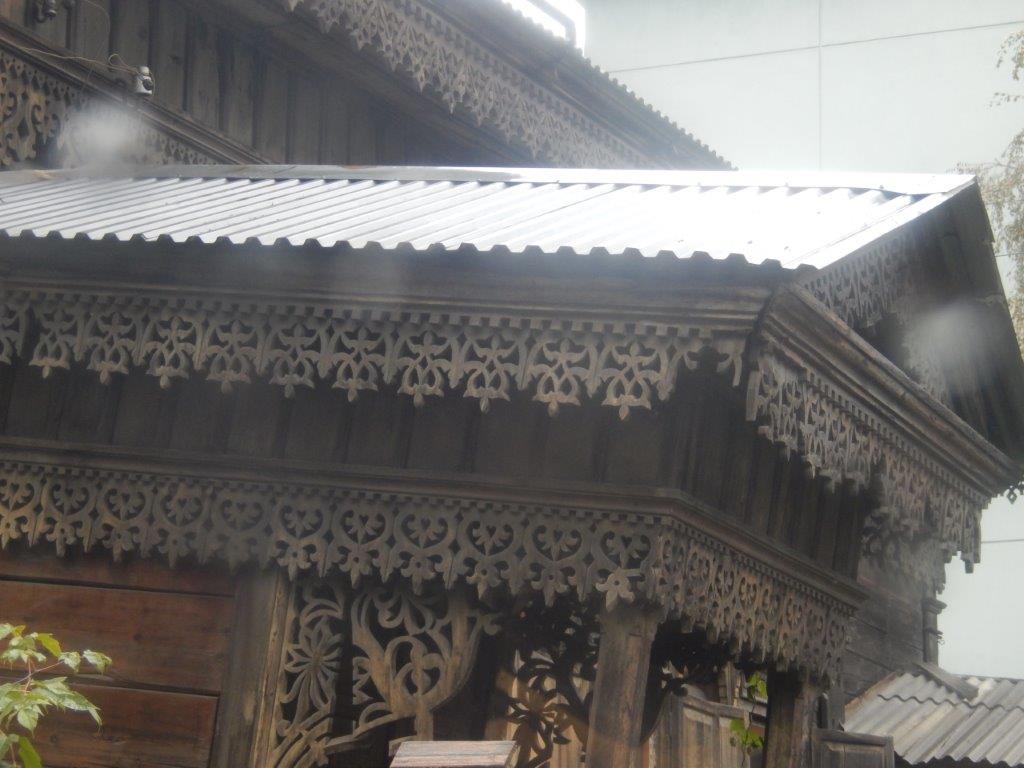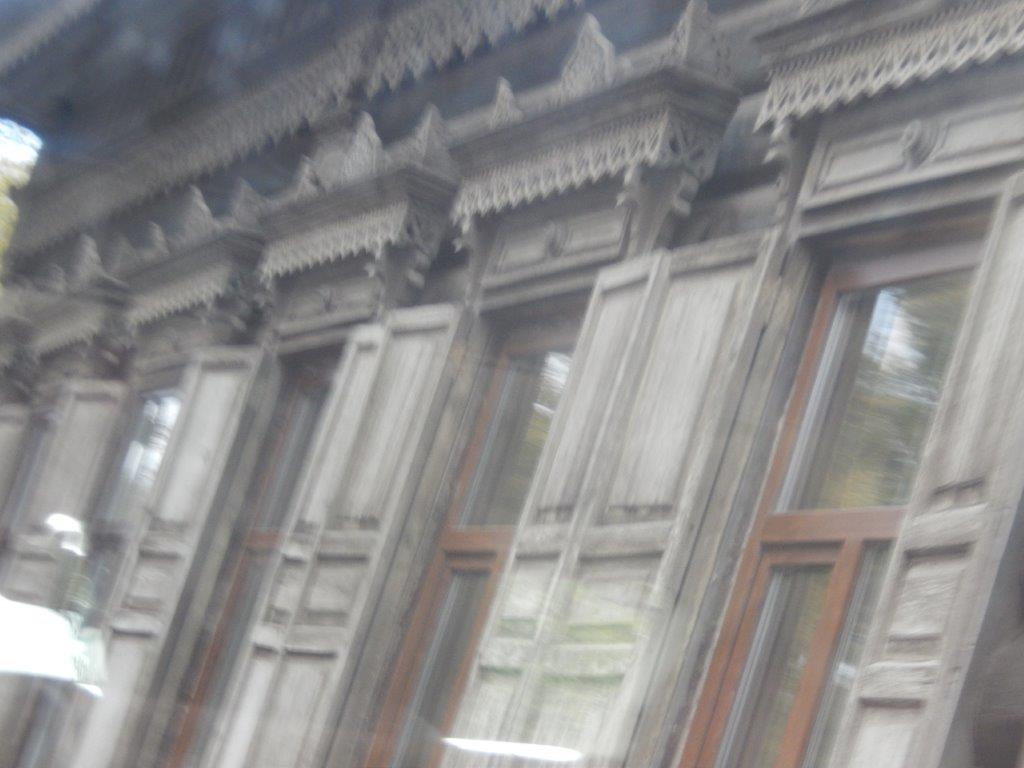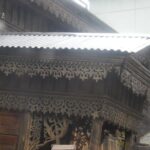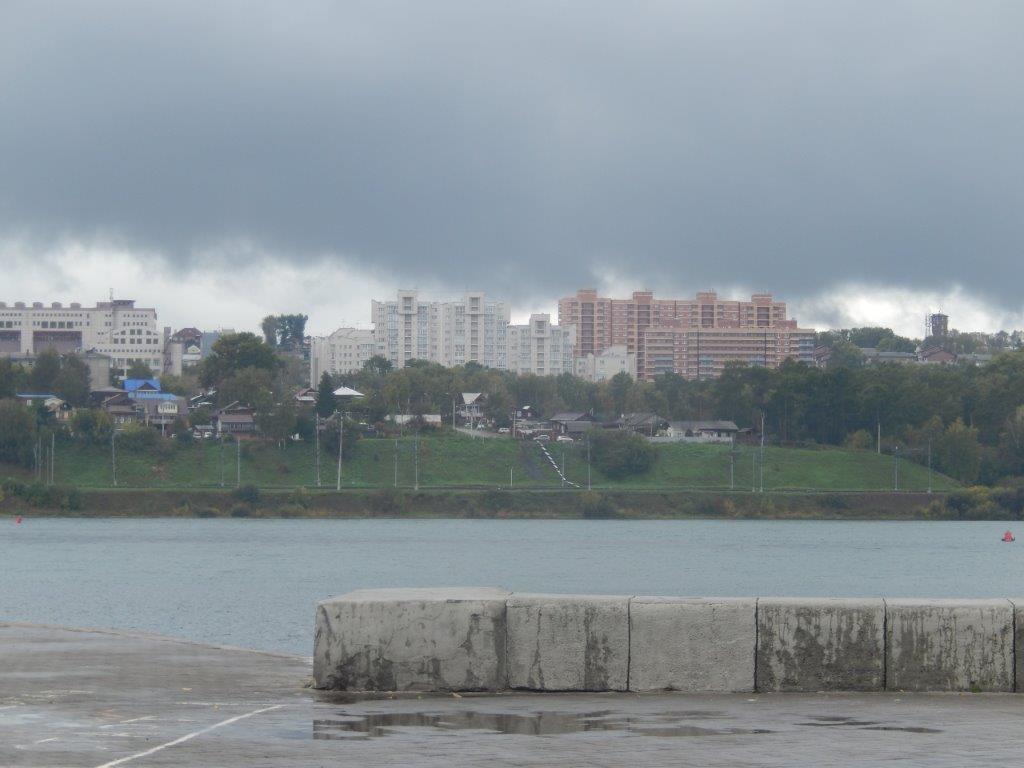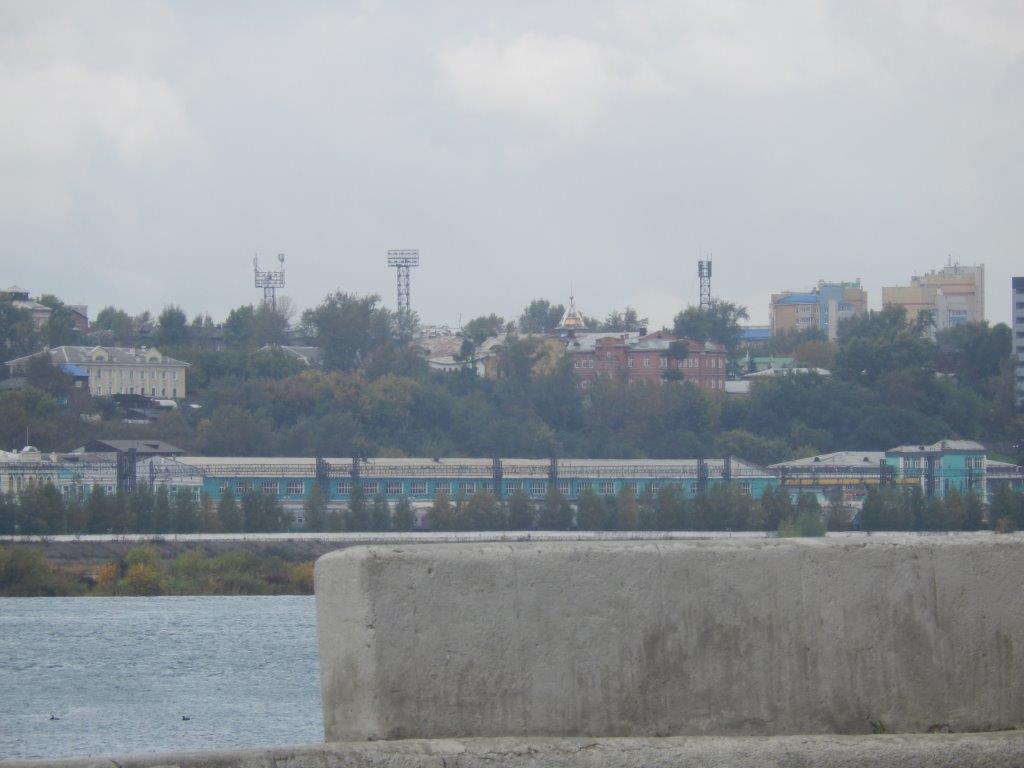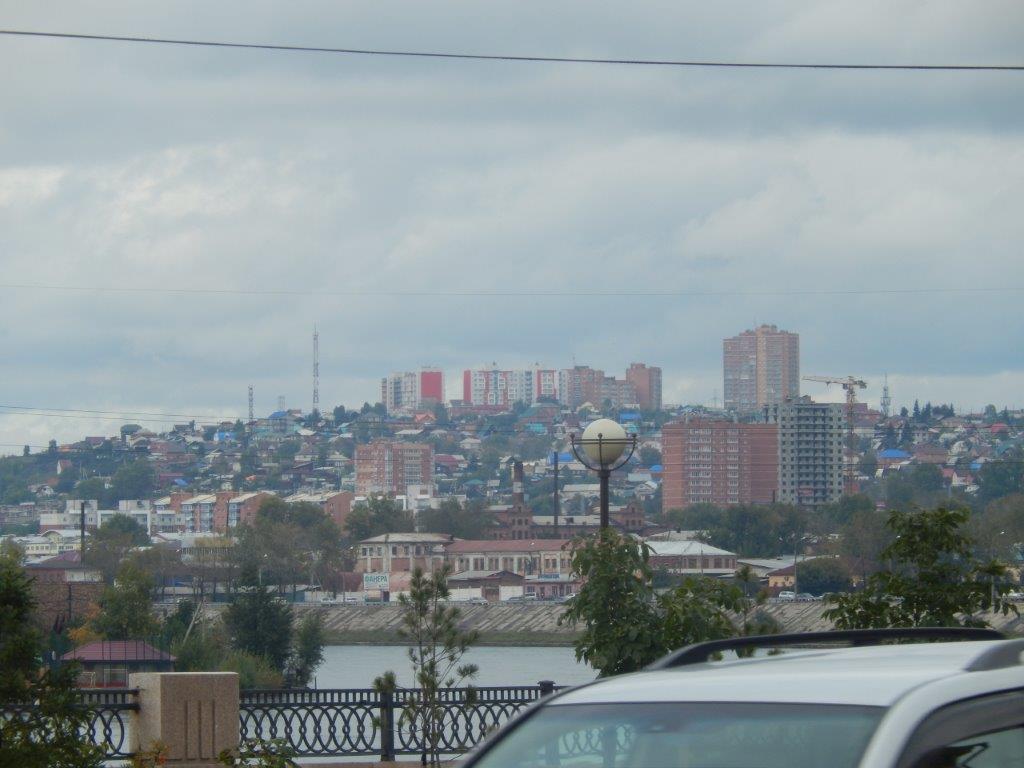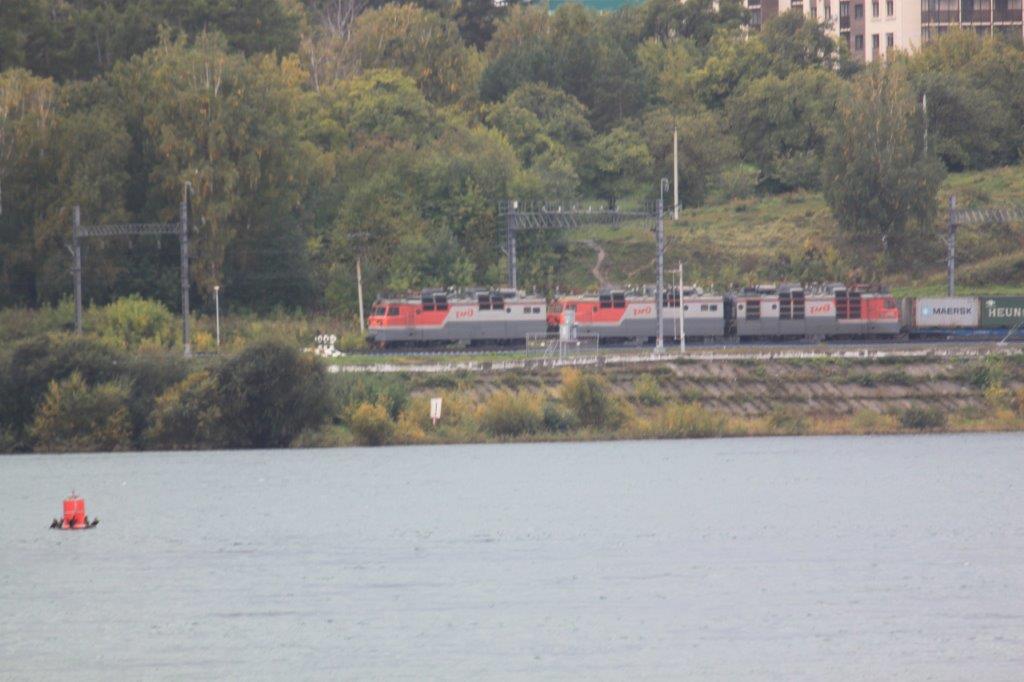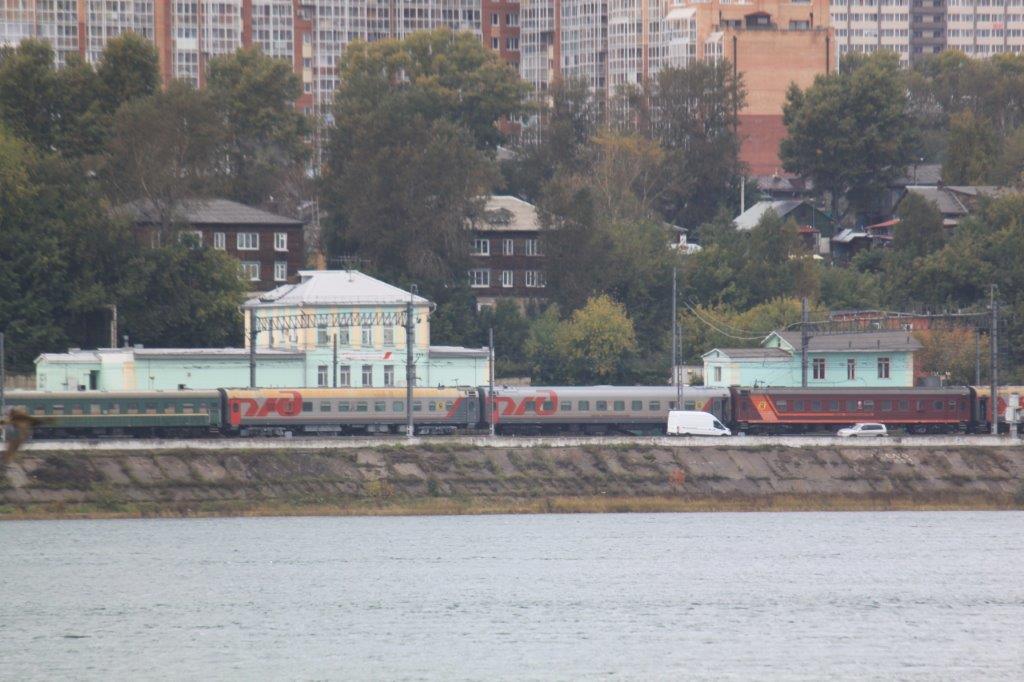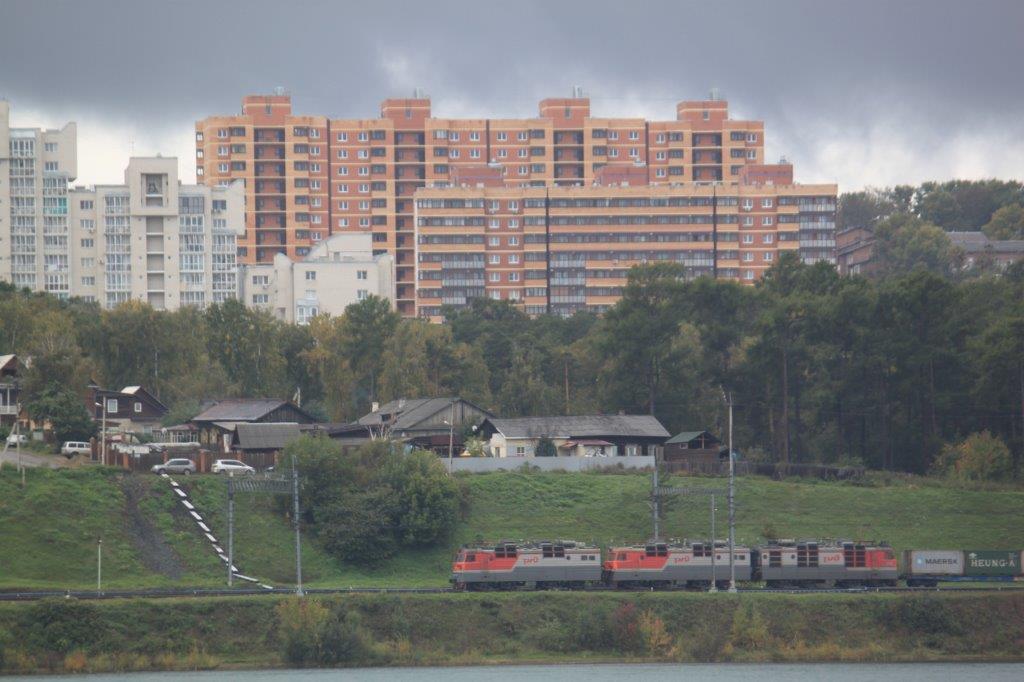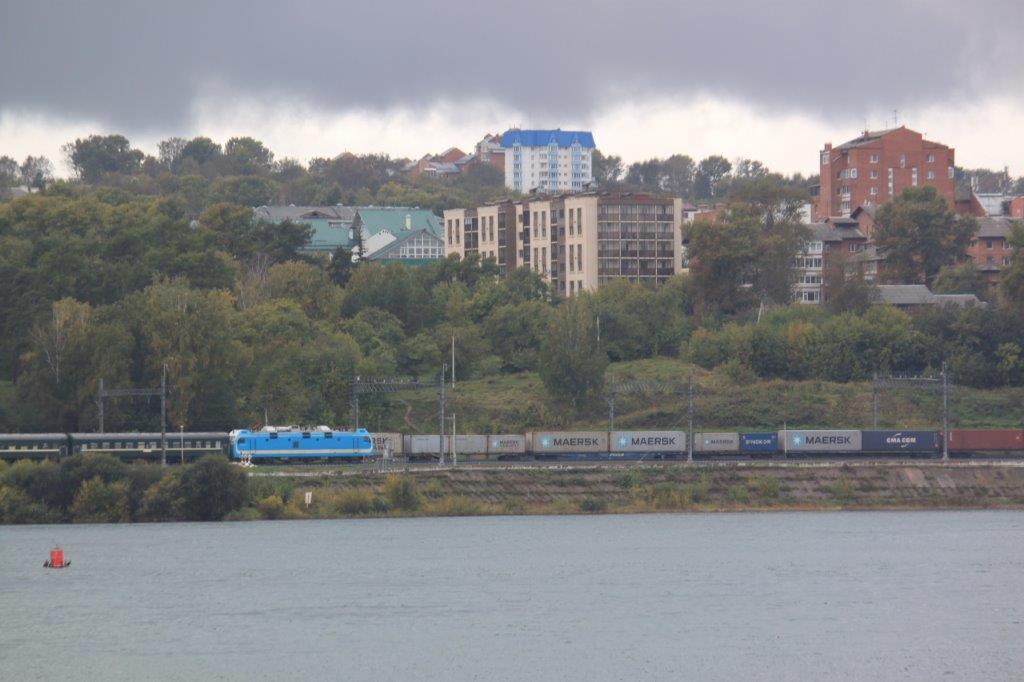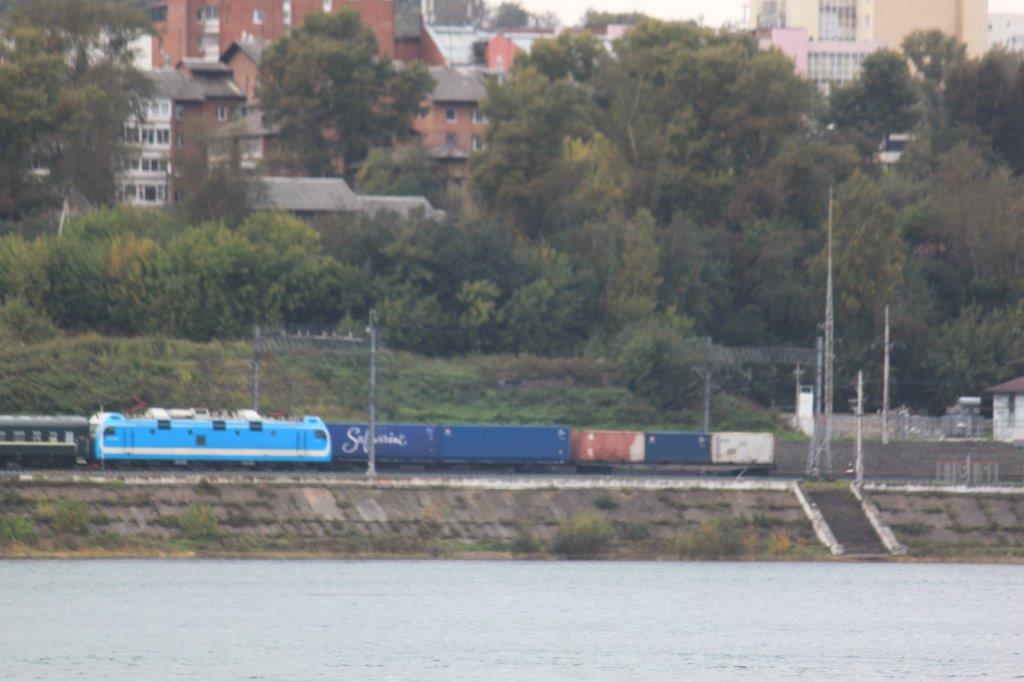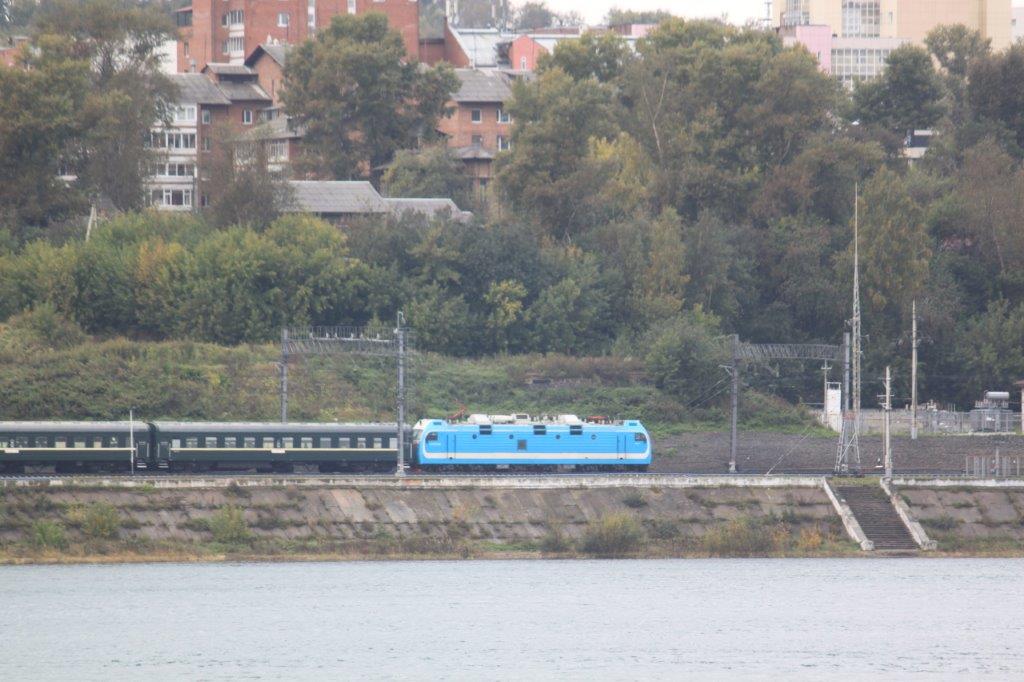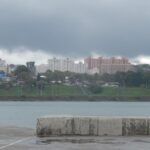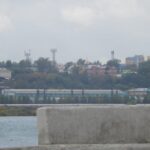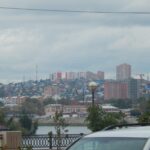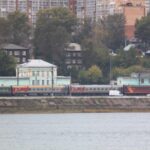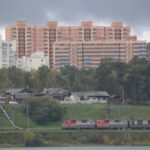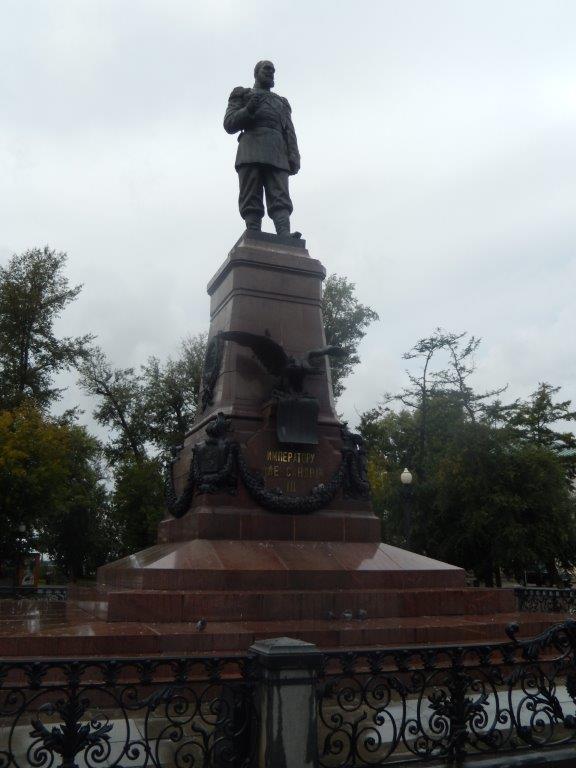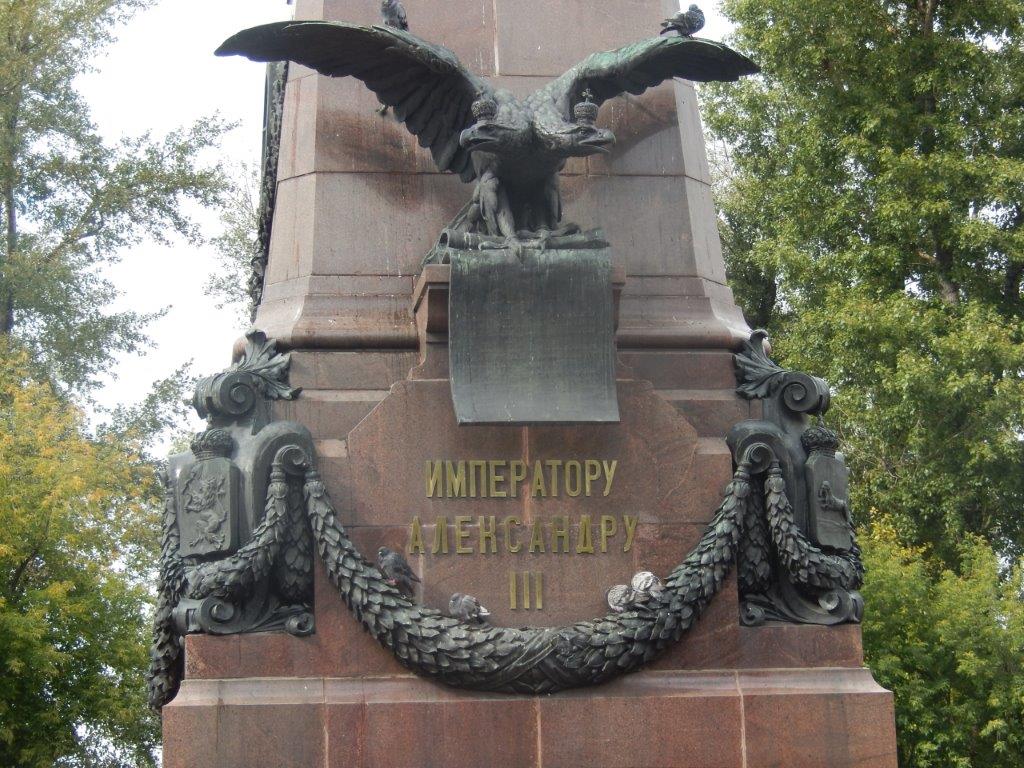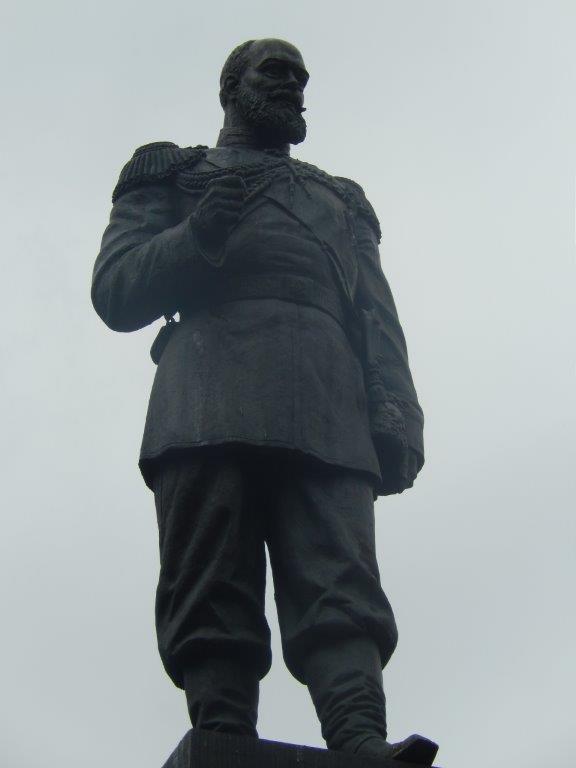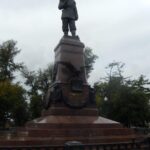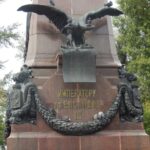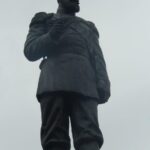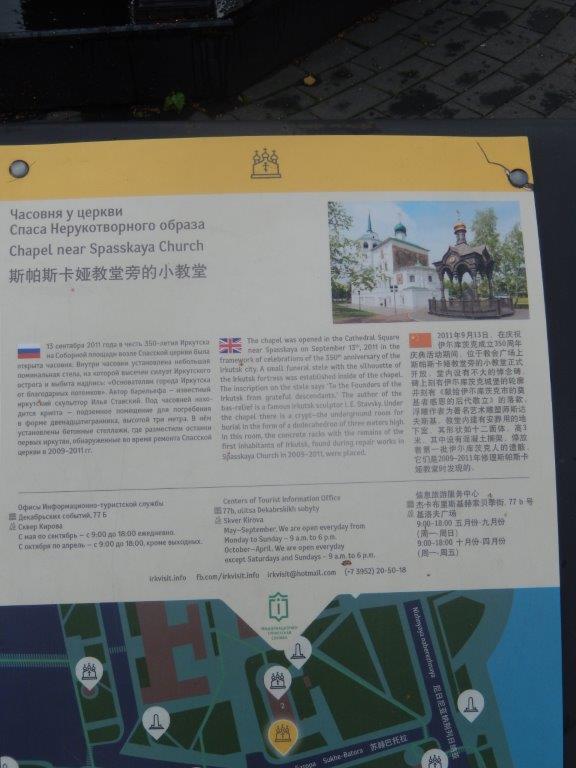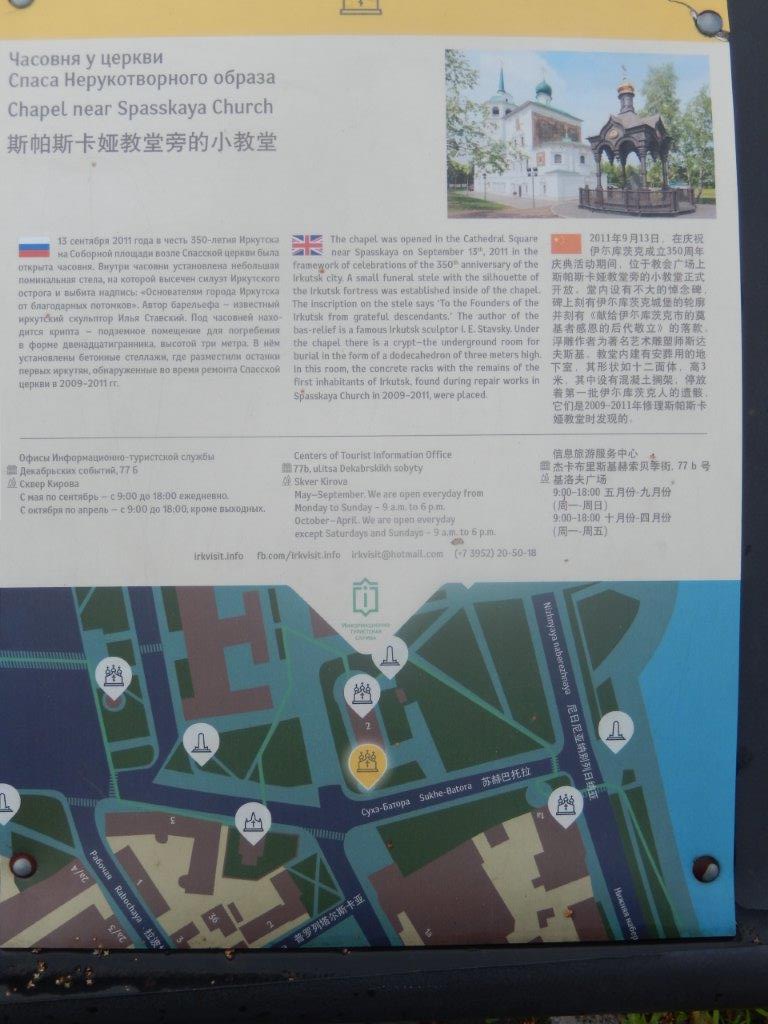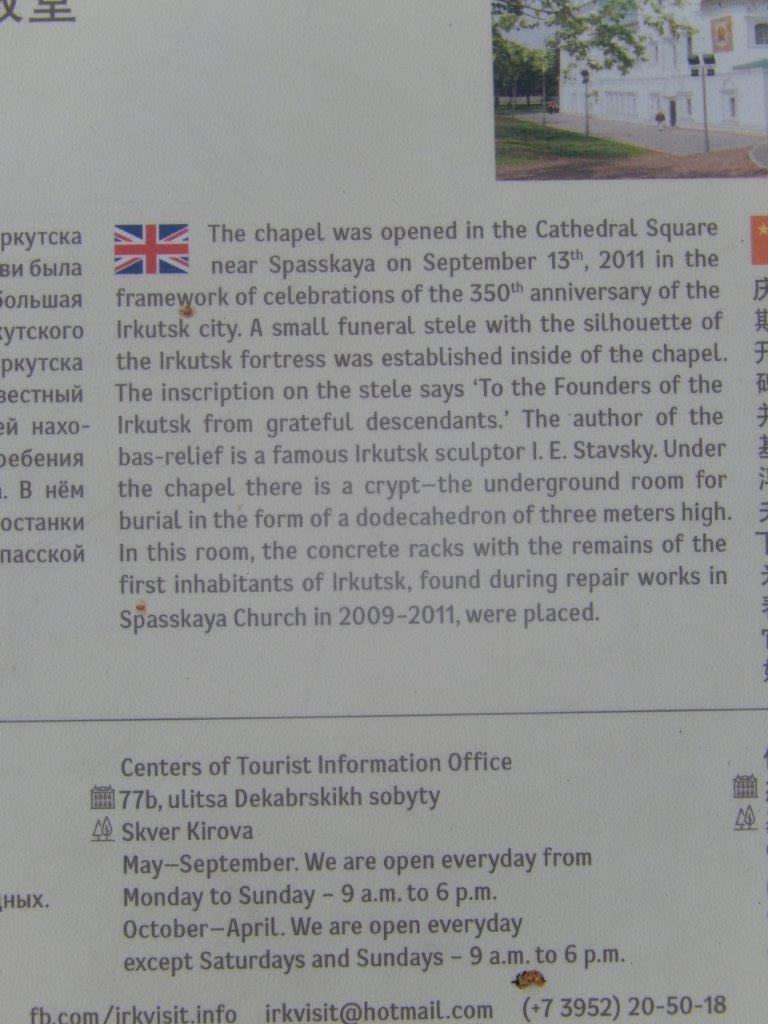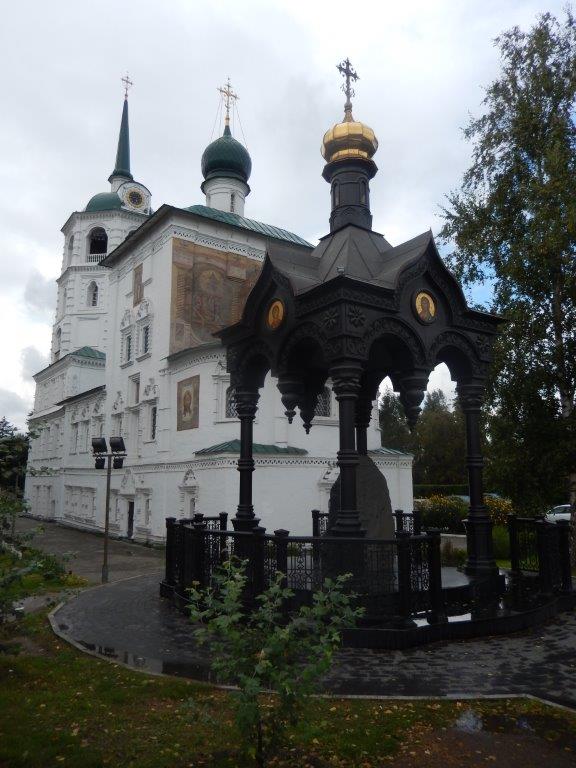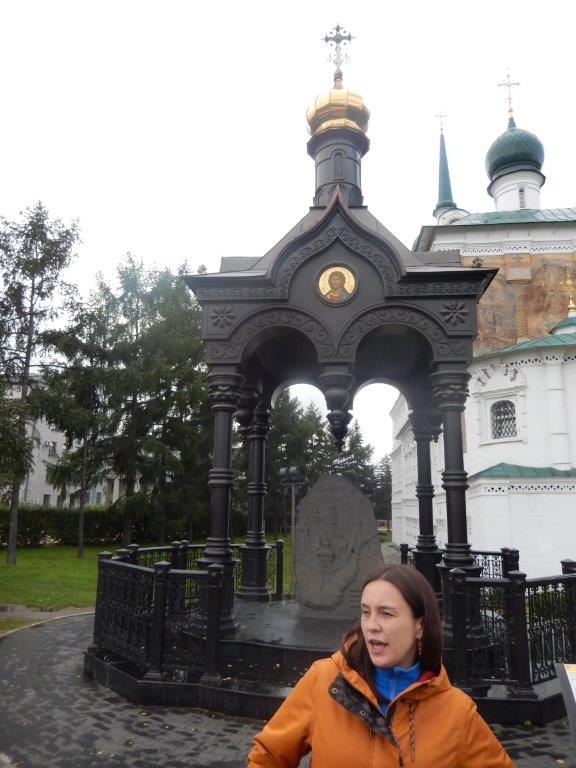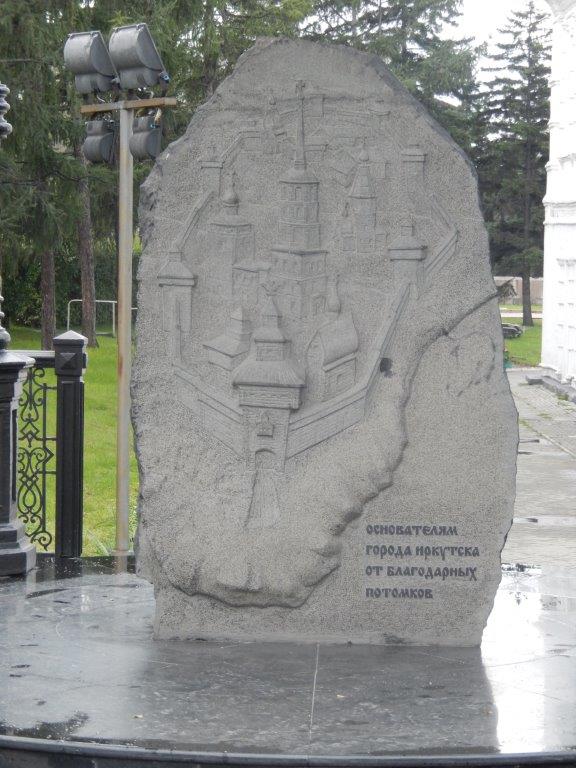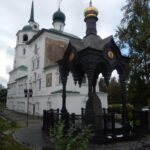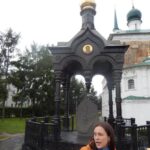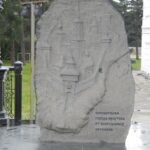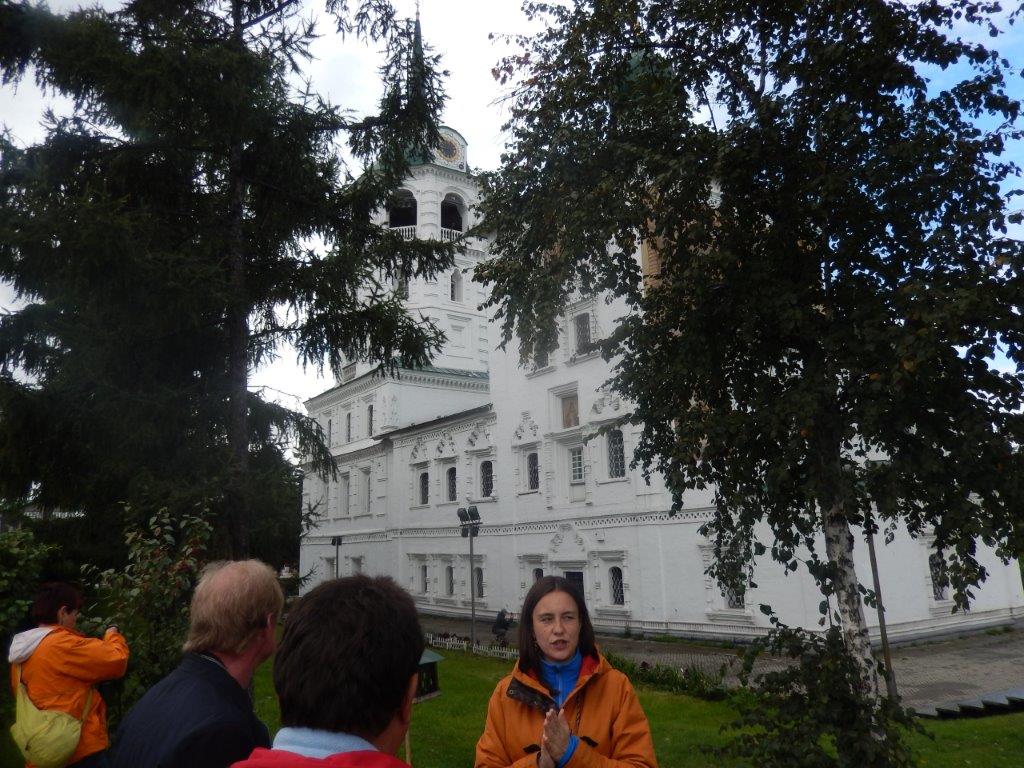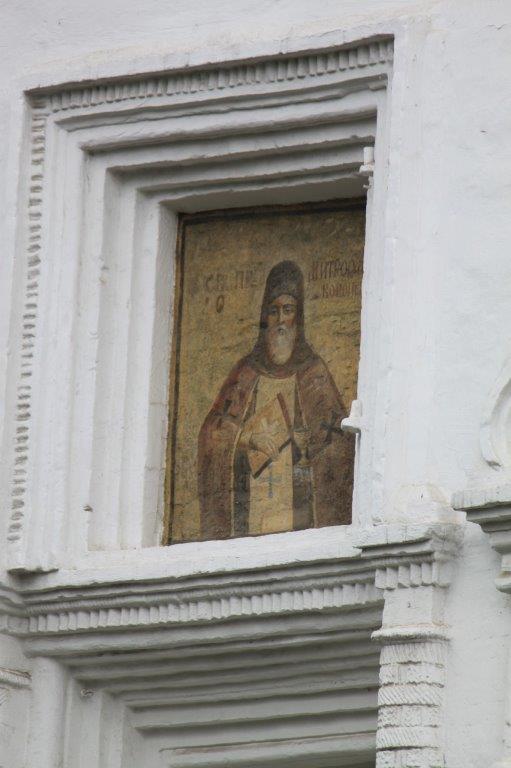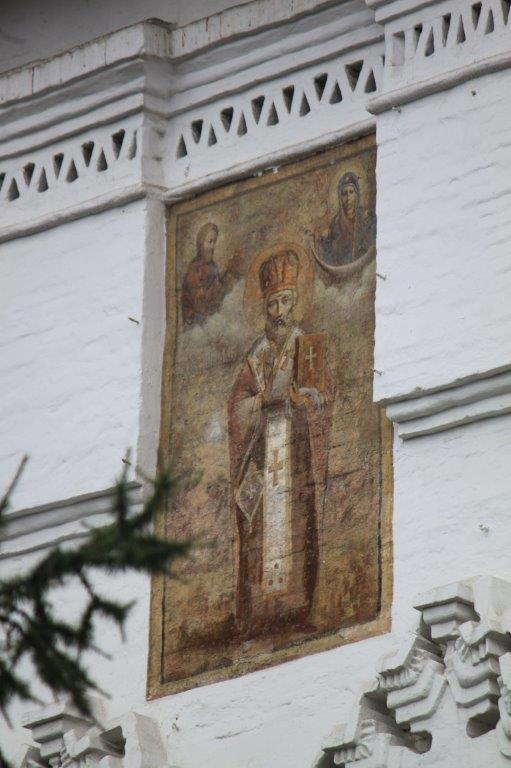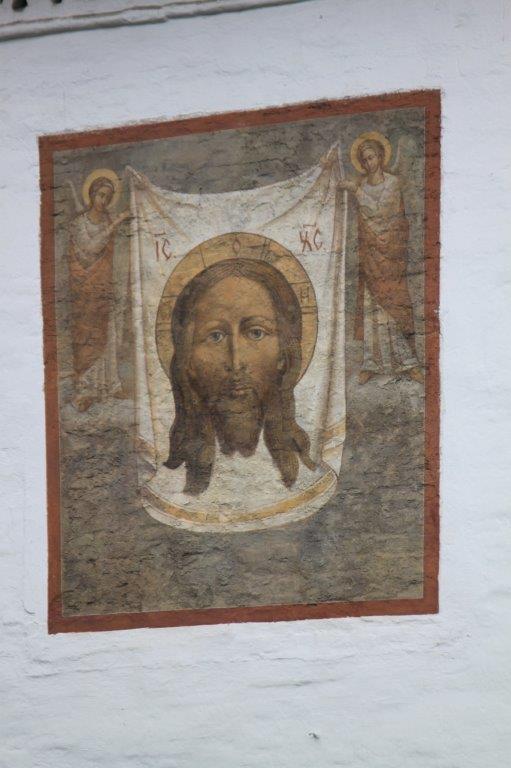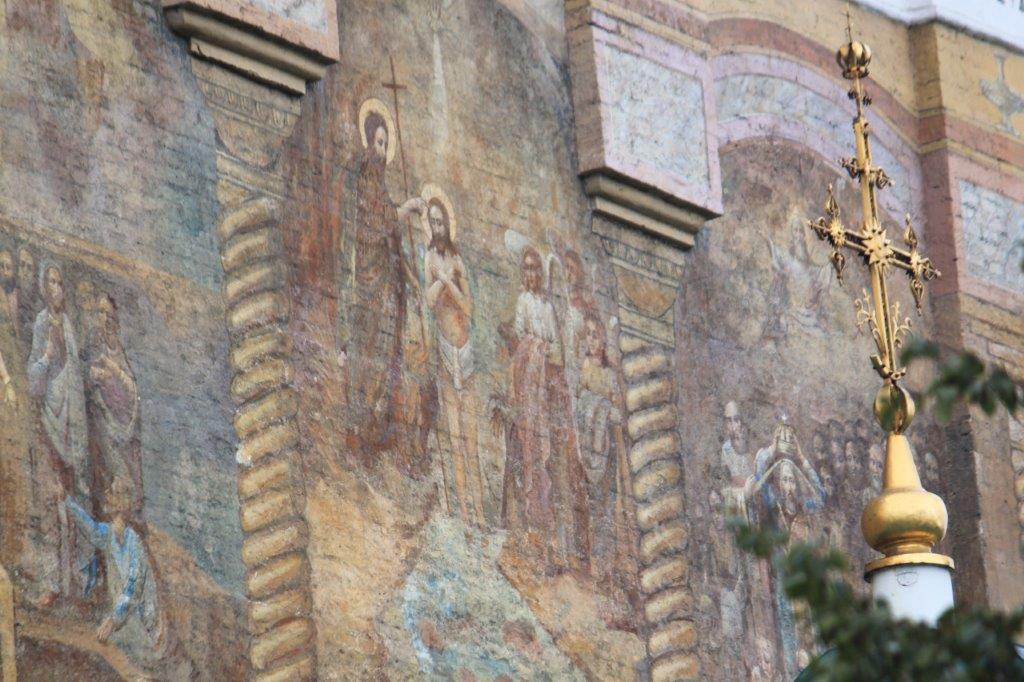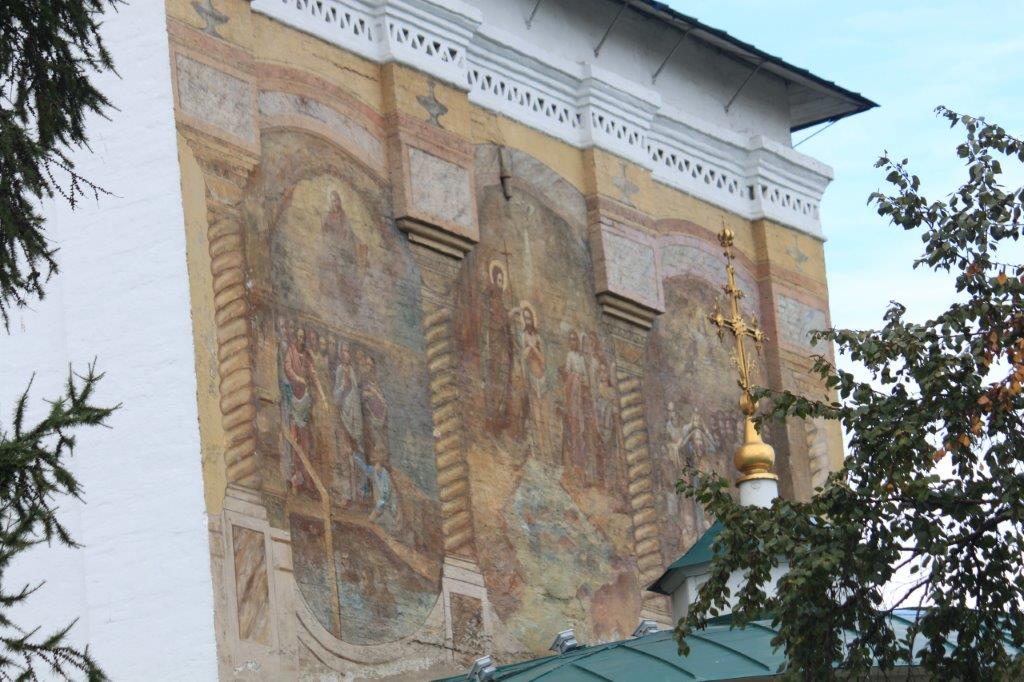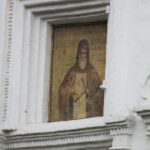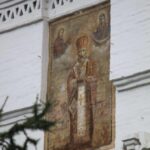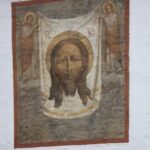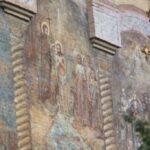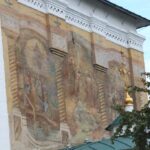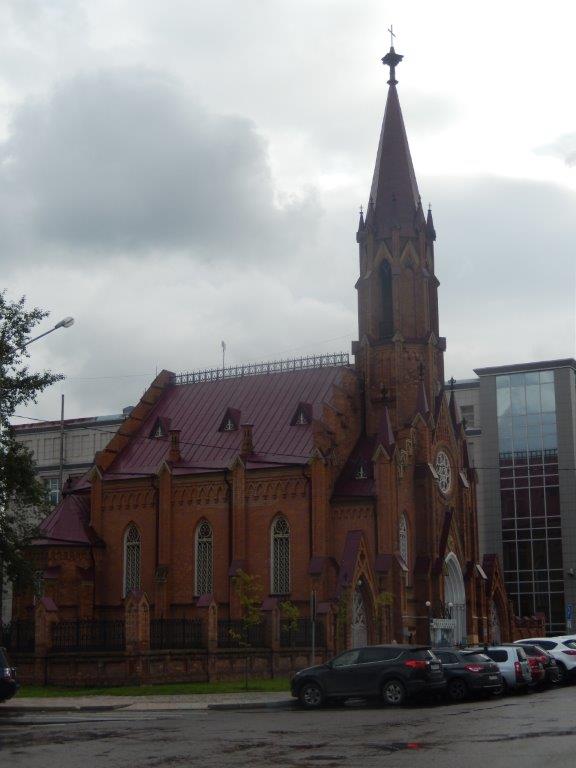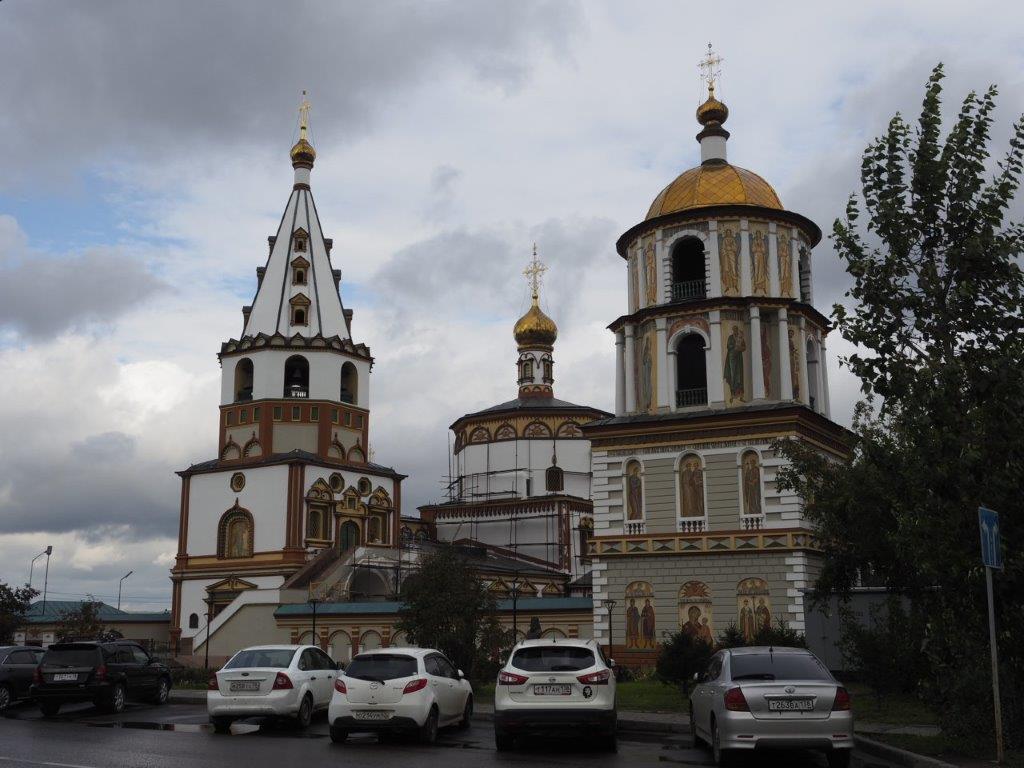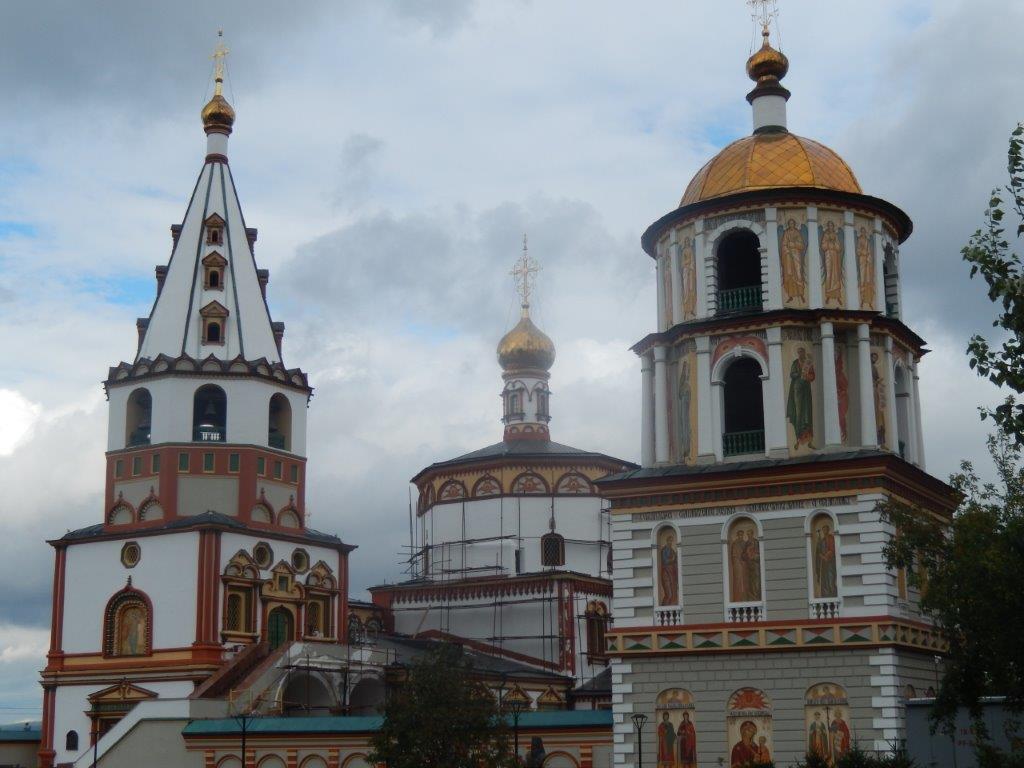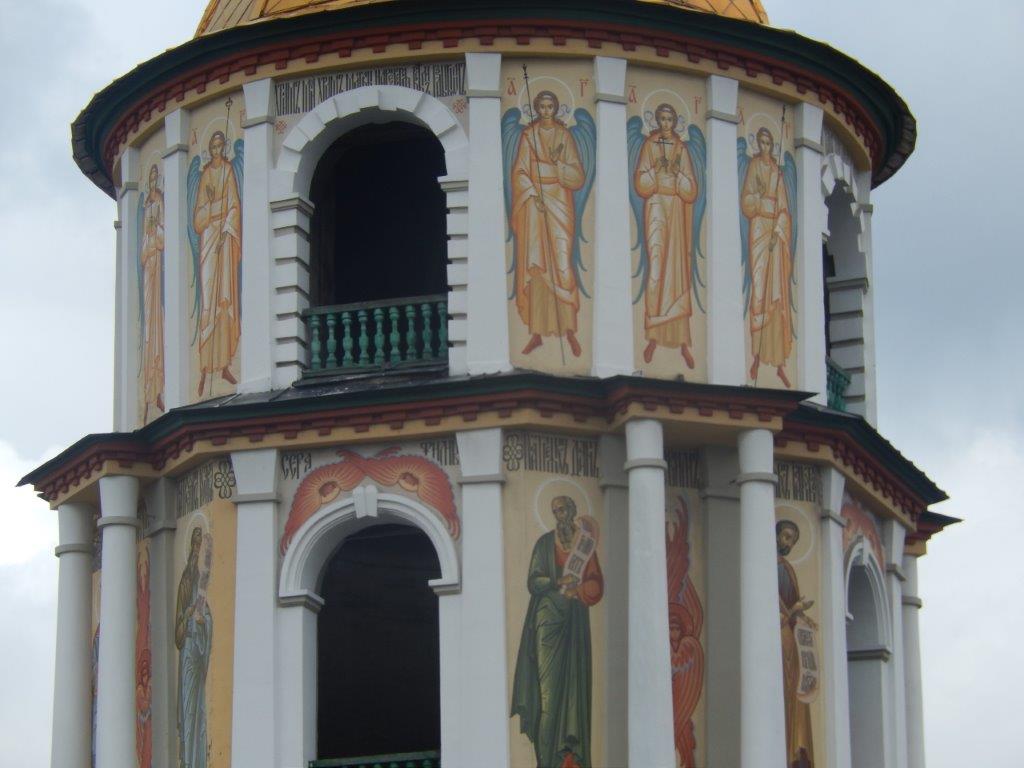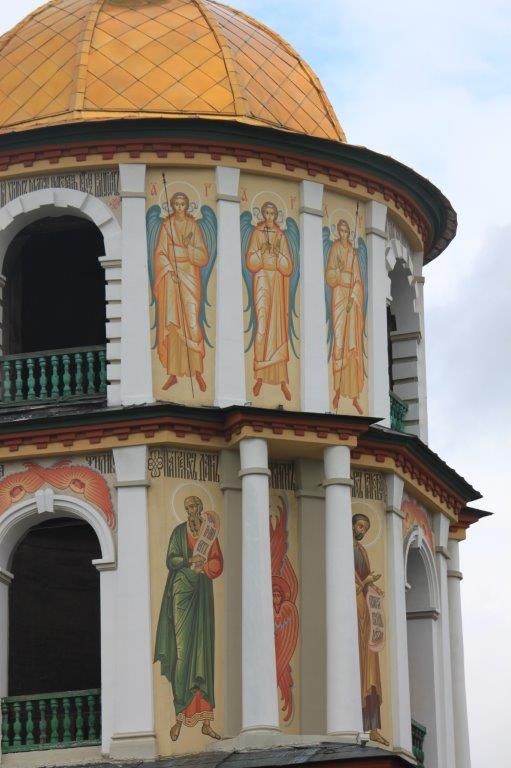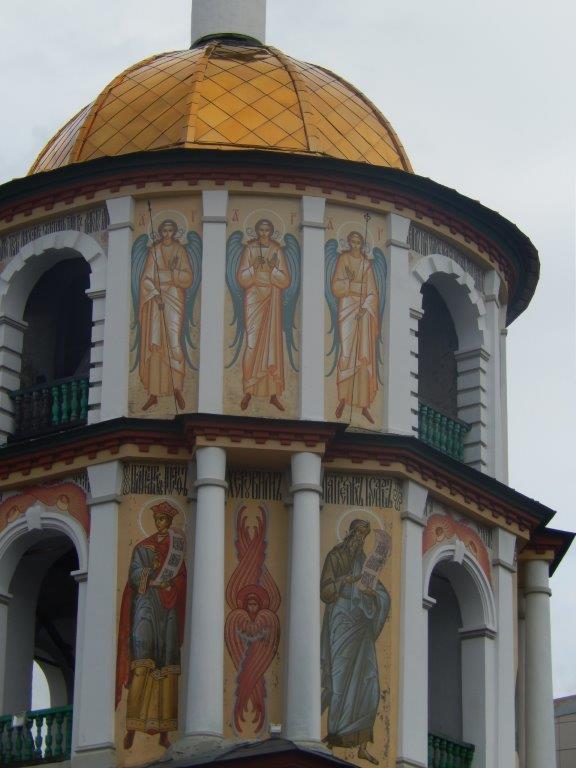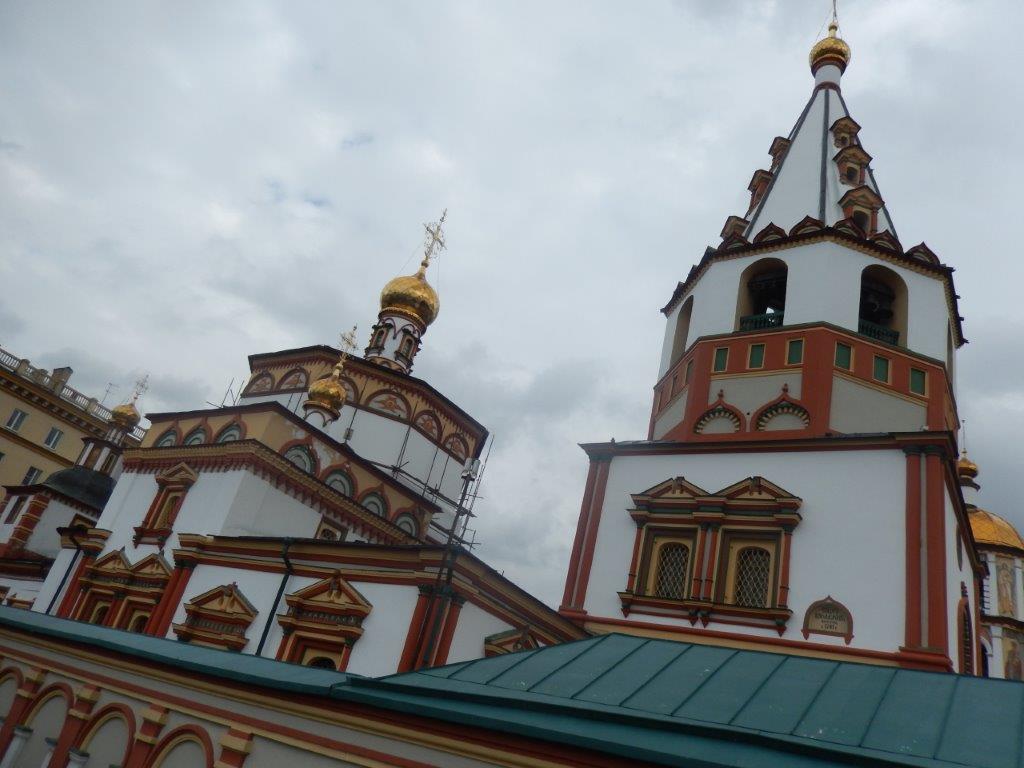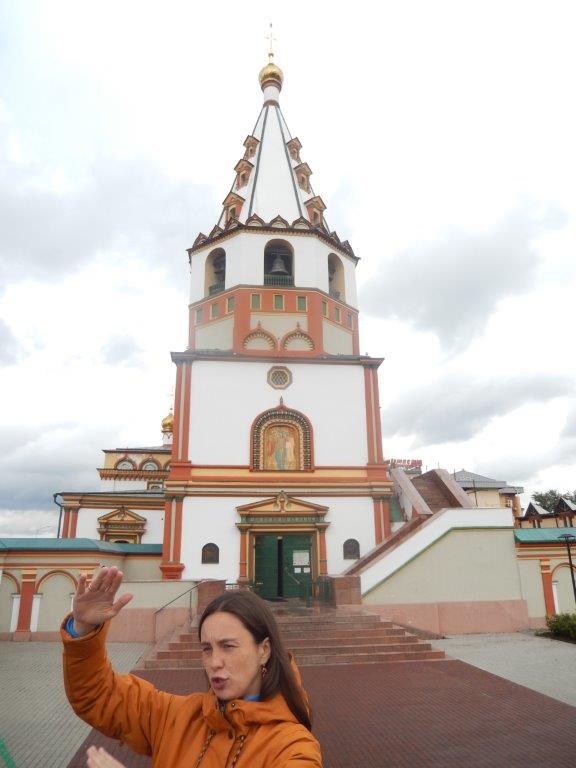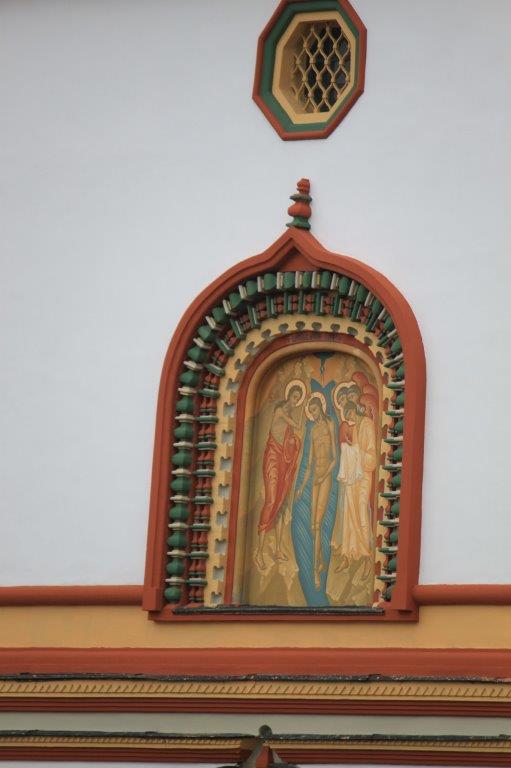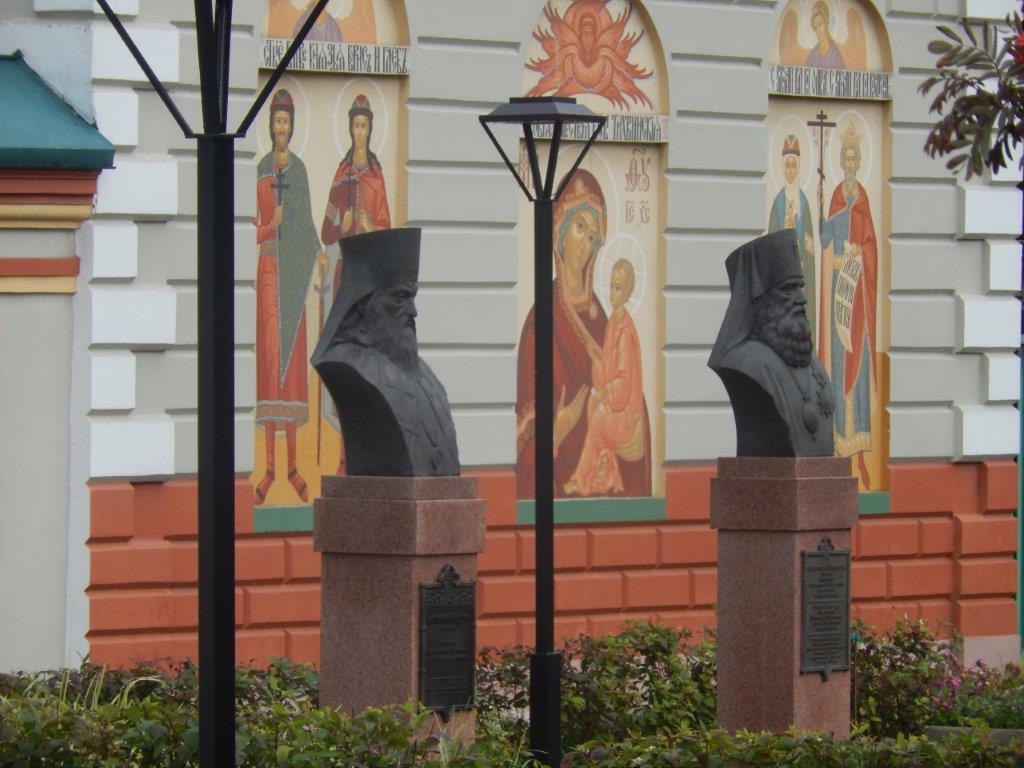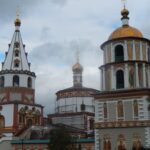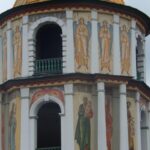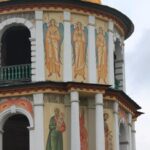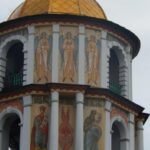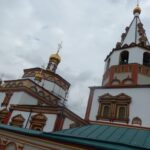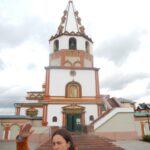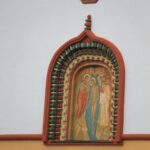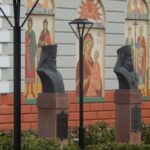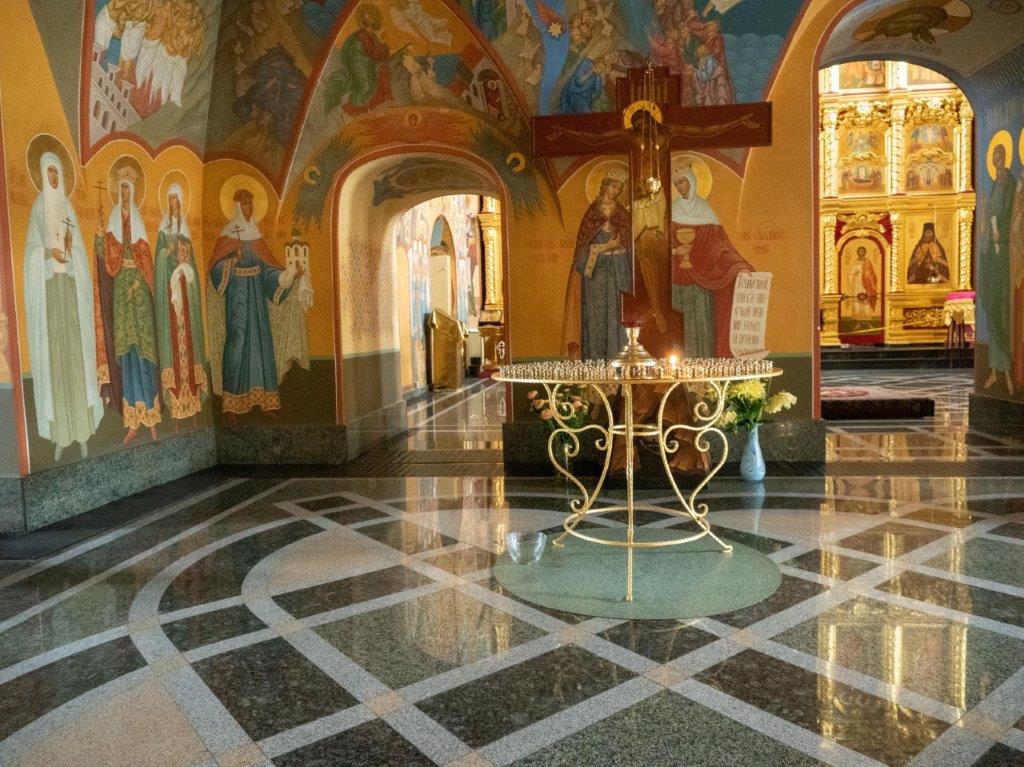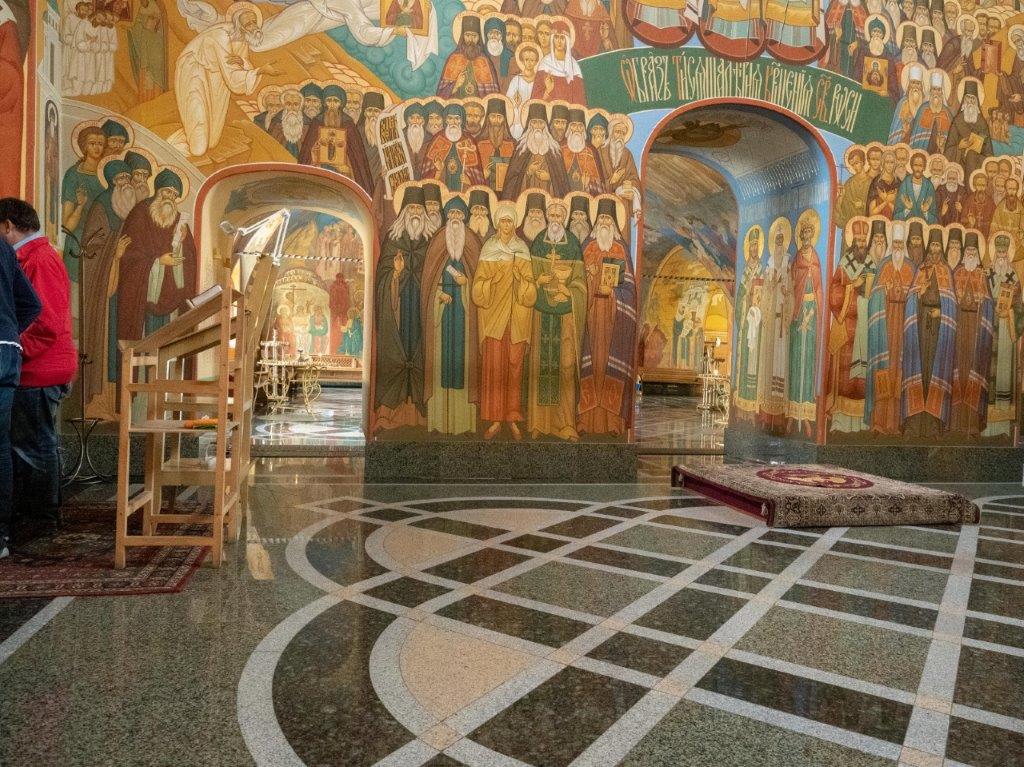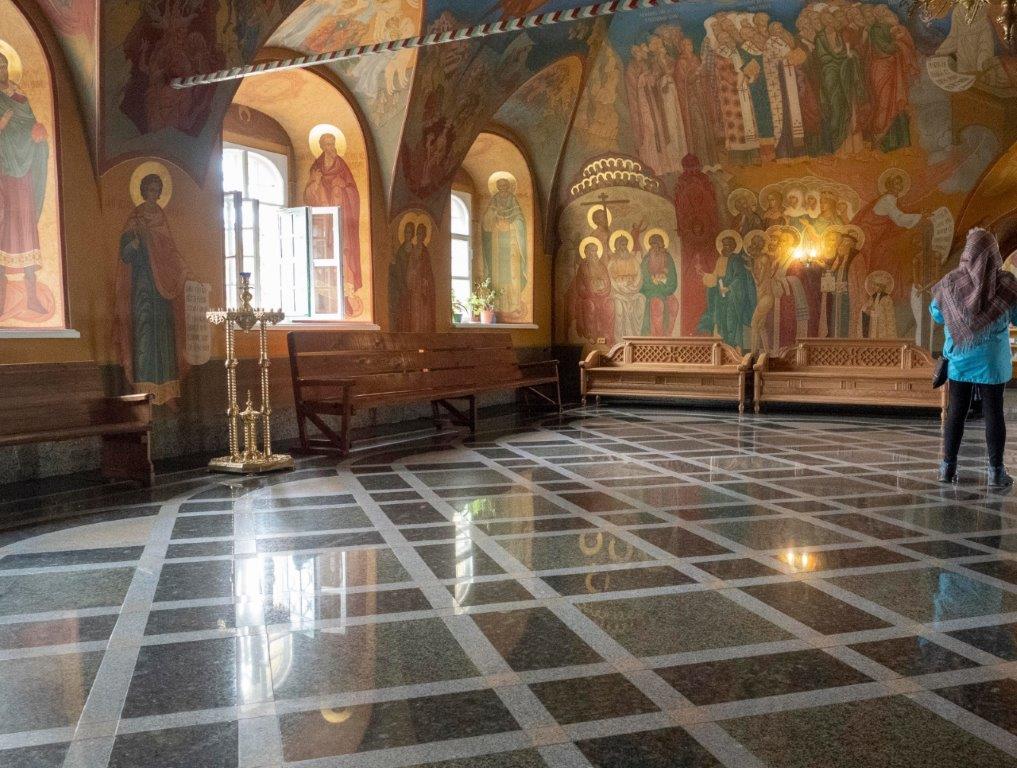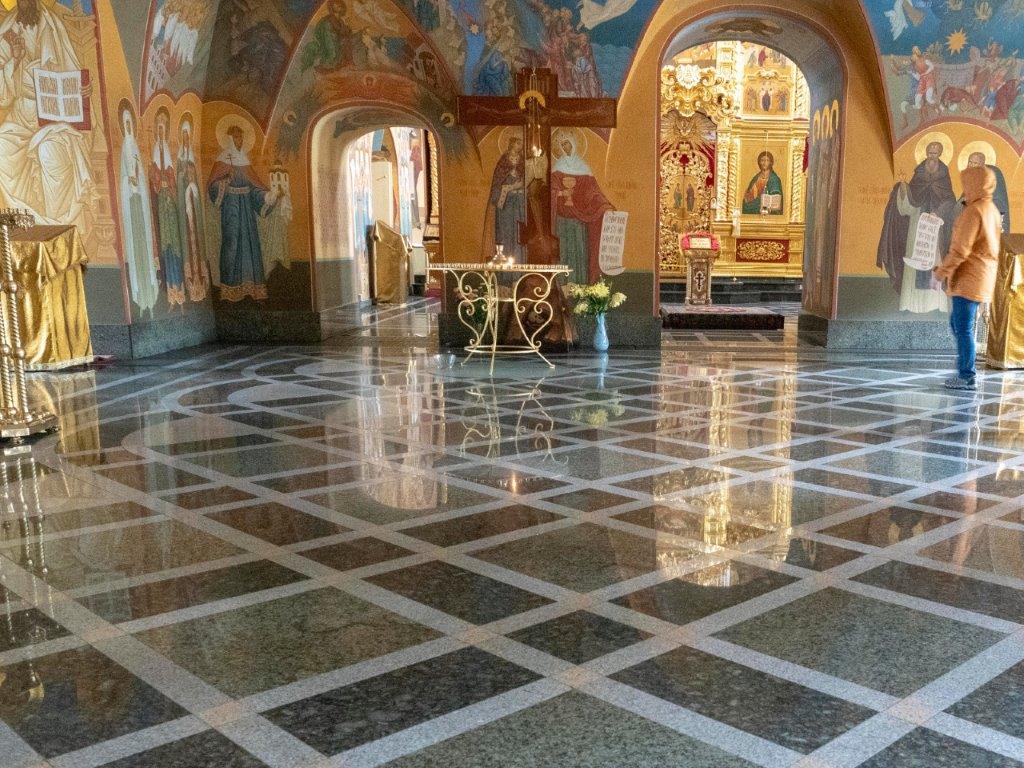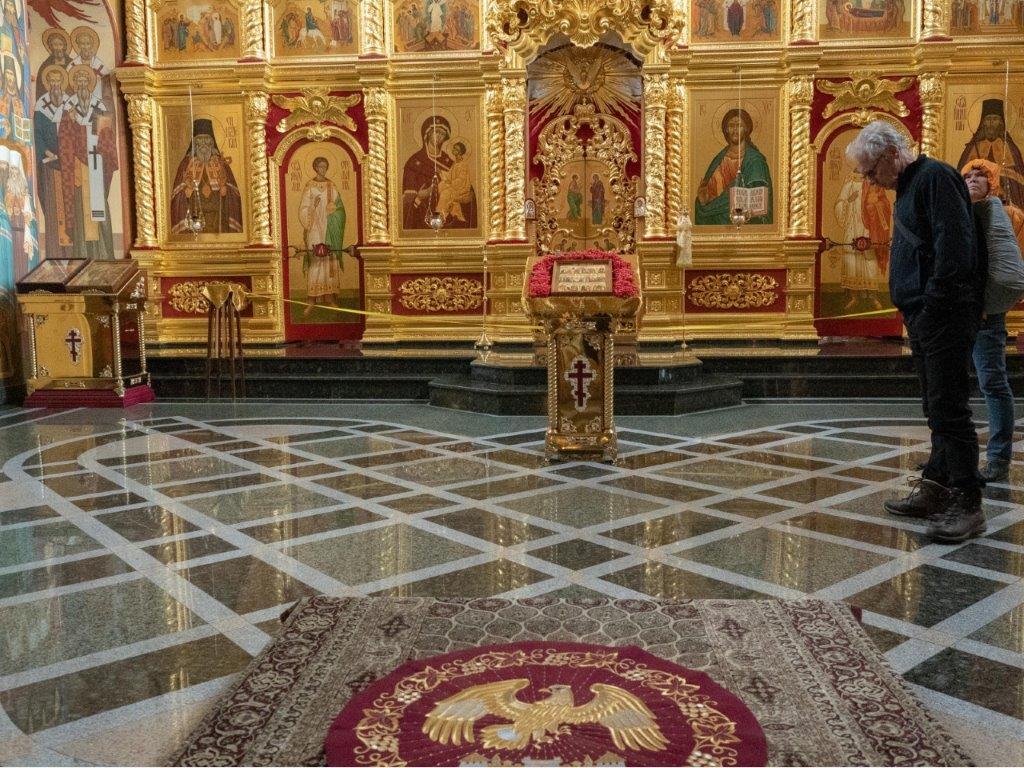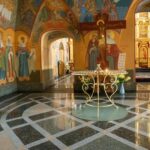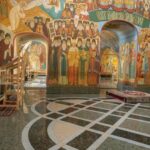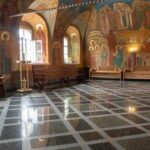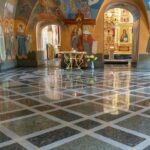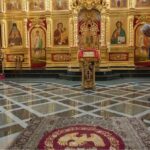A brief visit to Irkutsk
After arriving in Irkutsk,
The Wandelgek first checked in his hotel, which was located near the river Angara.
The elevator’s interior was mirrored and there was a water container in the corridor. The room was small, simple but clean and…
…there was a small, beautiful, black and white picture of the local lore museum on the wall.
Irkutsk
Irkutsk Russian: Иркутск, is the largest city and administrative center of Irkutsk Oblast, Russia. With a population of 617,473 as of the 2010 Census, Irkutsk is the 25th largest city in Russia by population, the 5th largest in the Siberian Federal District, and one of the largest cities in Siberia.

Located in the south of the eponymous oblast, the city proper lies on the Angara River, a tributary of the Yenisei, about 850 kilometres (530 mi) to the south-east of Krasnoyarsk and about 520 kilometres (320 mi) north of Ulaanbaatar. The Trans-Siberian Highway (Federal M53 and M55 Highways) and Trans-Siberian Railway connect Irkutsk to other regions in Russia and Mongolia.
Many distinguished Russians were sent into exile in Irkutsk for their part in the Decembrist revolt of 1825, and the city became an exile-post for the rest of the century. Some historic wooden houses still survive. When the railway reached Irkutsk, it had earned the nickname of “The Paris of Siberia.” The city was the center of bitter fighting in the Russian Civil War of 1918–20. Afterward, in the Soviet period, its architecture was dominated by the mandatory squared-up style. The city became a major centre of aircraft manufacture. The historic centre of Irkutsk is located on UNESCO’s tentative list of World Heritage Sites.
Etymology
Irkutsk was named after the Irkut River. Its name was derived from the Buryat word for “spinning,” and was used as an ethnonym among local tribes, who were known as Yrkhu, Irkit, Irgit, and Irgyt. The city was formerly known as Yandashsky after the local Tuvan chief Yandasha Gorogi.
The old spelling of the name of the city was «Иркуцкъ». Before the revolution, the city was called “East Paris”, “Siberian Petersburg”, “Siberian Athens”. Locals like to think of their city as “middle of the earth”.
Irkutsk city tour
There was enough time left for a short afternoon city tour by bus.
The Wandelgek first brought a visit to the exterior of the local history museum which he had seen before on the picture in his hotel room.
Apart from the impressive building there was this large prehistoric stone in front of it which had ancient carvings on it.
History
In 1652, Ivan Pokhabov built a zimovye (winter quarters) near the site of Irkutsk for gold trading and for collecting fur taxes from the Buryats. In 1661, Yakov Pokhabov built an ostrog (a small fort) nearby. The ostrog gained official town rights from the government in 1686.
The Irkutsk prison, founded in 1661 as an outpost for the advancement of Russian explorers in the Angara region, soon ceased to be only a defensive structure due to the advantage of its geographical position. According to historical documents, 10 years later, in 1671, here, in addition to servicemen and yasak people, lived “plowed peasants with their wives and children.” A posad appeared, which gave rise to residential quarters of the future city. As for the prison itself, as its influence in the region grew, it was completely rebuilt twice (in 1669 and 1693), expanding in size.
The fate of the prison was such that its military-defensive significance was less noticeable than other previously erected forts near the Angars, for example, Bratsk (1631) or Verkholensk (1644). However, its location at the crossroads of colonization, trade and industrial routes predetermined the role of Irkutsk in the history of Eastern Siberia. In 1682 it became the center of an independent region, and in 1686 it received the status of a city. Irkutsk at the beginning of the 18th century was divided into two parts: “small town”, or the prison itself, and “big city”. The first one started from the bank of the Angara and was a wooden fortress with adjacent buildings. These included the stone building of the provincial chancellery, the house of the vice-governor (former voivodship) with barns and cellars, the Church of the Savior. “Small town” was the administrative center of the vast Irkutsk province since 1731.
It was a little bit rainy but that couldn’t spoil the fun of discovering a new town although only briefly, because tomorrow The Wandelgek would be travelling on the TransSiberian Express again.
Wooden houses in Irkutsk
The town of Irkutsk still had some very old wooden houses left…
In all of Siberia and in large parts of the world that are on the same geographical latitude, it has long been custom to built wooden houses and fortresses. This was not exclusively done so in Siberia, but also in Canada, the north of the US, Northern, Central and Eastern Europe (including European Russia).
For more information regarding these wooden structures, read: Exploring and conquering the Wild East of Siberia
Beneath I will expand a bit more on wooden houses specificly built in Irkutsk.
Irkutsk is well known for its wooden architecture. Many of its monuments, including ancient log structures, were preserved. Some of the log structures have presently been restored. Almost all of the wooden houses are privately owned. Siberian wooden houses of course differ from the log structures of the European Russia.
The art of constructing wooden houses in this part of Russia passed through 3 stages that were all quite different from another and show development in building style and knowledge:
- The houses of the first settlers of the city. No examples of these houses have survived though. They looked like very simple structures, more like huts. Siberian huts were huge brown structures. They all had basements which were used to store provisions. The basement is the most characteristic feature of a Siberian house.
- In the middle of the 18th century, the houses were modified. The basement was turned into a kitchen of living space and a front porch and balcony appeared. The windows were widened. Both in phase 1 and 2 the houses all looked very similar/uniform.
- In the first half of the 19th century the simple structures were replaced by more complex construction. The houses now had variation in porches and attics. Uniformity was no longer retained. The facades were decorated with carvings and thread work. Special emphases was placed on adorning windows, with rich carvings and scrolls. The windows were similar to the windows of a palace in a Russian fairy-tale style. The ornaments were not only decorative, but also symbolic. The symbols depicted different hopes, and dreams of the people of that time. E.g.: people believed that evil spirits could enter the dwelling through doors and window frames. The decorations used in those parts of the house were there for protection. The sign of the sun could be outlined with jagged star shapes. This symbolizes life, happiness, and the beginning of all good things. Two pigeons with a branch in their beaks are symbolic of the “Universe tree”. Long ago, people believed that in the heavenly paradise there was a fairy tree covering all of heaven with leaves and fruits of all the trees and plants from all over the world. In this tree these pigeons lived.
Above is an example of a phase 3 house with larger windows, a backyard porch and intricately carved window decorations.
Often, 5 or 6 windows face the street. The windows are quite large. The houses are abundantly decorated with serous??? mostly of the Baroque style which was popular at that time. Carved shutters are painted in blue and green. Blue, symbolizing hope and green symbolizing youth and the prospect of a long life, are 2 favorite colors in Siberia. White symbolizes purification.
In Siberia, wooden houses were built using pine and cedar wood. Sometimes the foundation is of larch because it is firm and when put under water becomes as strong as iron. The upper part is constructed using pine, because it helps to retain heat inside the house. Until the end of the last century, the interior of wooden houses was made of clean logs, not covered by anything.
The river Angara
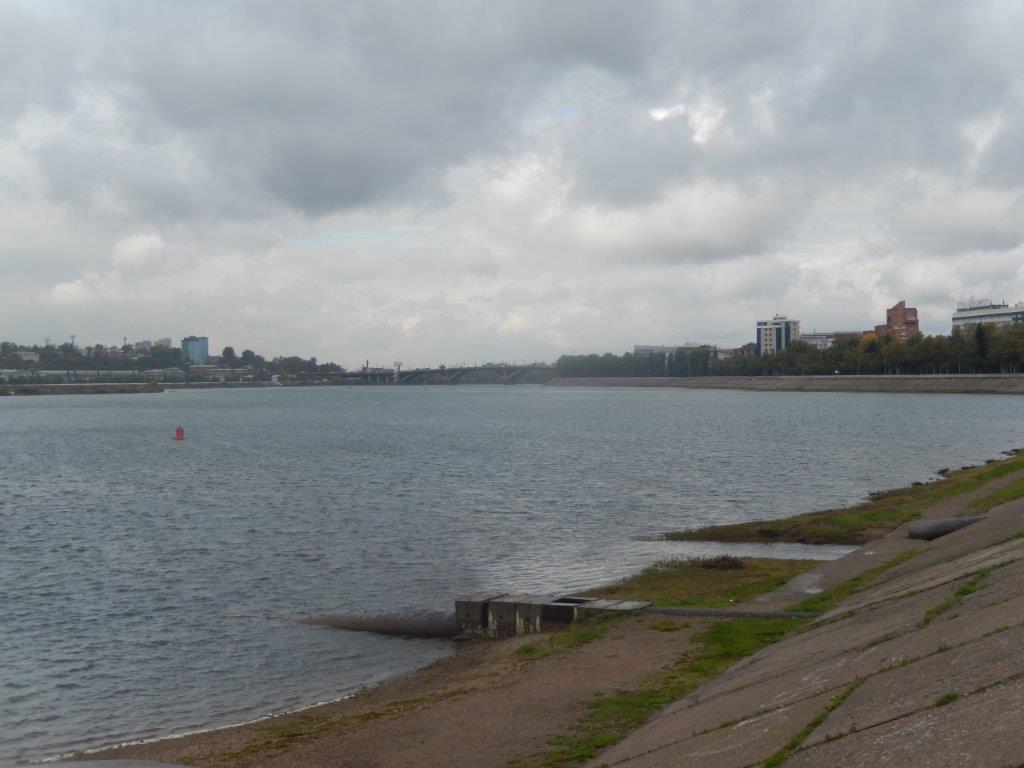 After a short drive through the city the bus arrived at the river Angara from where The Wandelgek had a nice view over the river and the bridge that he had crossed a few days ago before going to Lake Baikal.
After a short drive through the city the bus arrived at the river Angara from where The Wandelgek had a nice view over the river and the bridge that he had crossed a few days ago before going to Lake Baikal.
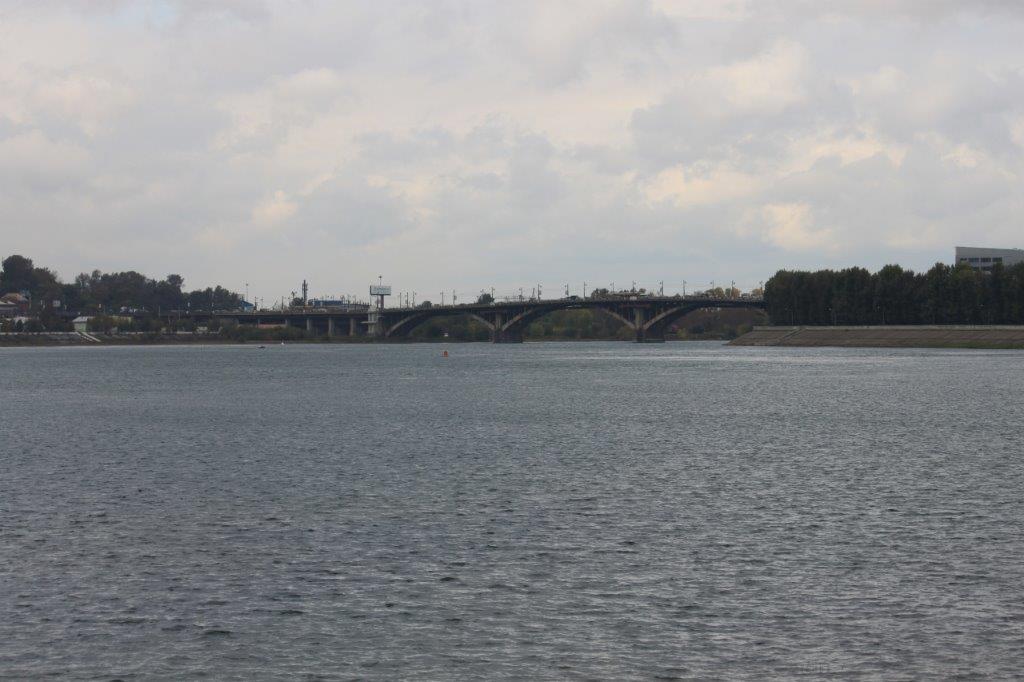 Irkutsk Railway Station
Irkutsk Railway Station
On the other side of the Angara river was the main railway station of Irkutsk, wherefrom The Wandelgek would be leaving tomorrow, to travel further with the Trans Siberian Express towards…Mongolia.
At the crossroads of trade with China, the far east, Central Asia and Europe
As early as in mid-last century, Irkutsk justified itself to be the largest transportation hub of East Siberia. The city accommodates headquarters of East-Siberian railways, East-Siberian interregional territorial air transportation, East-Siberian inland navigation company.
Currently, East-Siberian railways are considered to be one of Russia’s largest in terms of both economic performance and technical level. Its cargo transporting intensity is 1.8 times greater than Russia’s railways average.
Statue of Tsar Alexander III
There was a large statue of Tsar Alexander the 3rd on the embankment.
Alexander III (Russian: Александр III Александрович, transcripted as: Aleksandr III Aleksandrovich; 10 March 1845 – 1 November 1894) was Emperor of Russia, King of Poland and Grand Duke of Finland from 13 March 1881 until his death on 1 November 1894. He was highly reactionary and reversed some of the liberal reforms of his father, Alexander II. Under the influence of Konstantin Pobedonostsev (1827–1907), he opposed any reform that limited his autocratic rule. During his reign, Russia fought no major wars; he was therefore styled “The Peacemaker“.
Trade and Industry
Alexander III took initiatives to stimulate the development of trade and industry, as his father did before him. Russia’s economy was still challenged by the Russian-Turkish war of 1877-1878, which created a deficit, so he imposed customs duties on imported goods. To further alleviate the budget deficit, he implemented increased frugality and accounting in state finances. Industrial development increased during his reign. Also during his reign, construction of the Trans Siberian Railway was started.
Another interesting site was near to the hotel. There were 3 churches, two Orthodox Christian and one Roman Catholic.
Chapel near the Spaskaya Church
Christ the Redeemer Church (Spaskaya Church)
The Church of Christ the Savior ( Russian : Храм Христа Спасителя) is a Russian Orthodox church in the Russian city of Irkutsk . The church is located in the historic center of the city. The church is the oldest building and was located within the walls of the lost Irkutsk Kremlin .
History
The first Savior Church was built in 1672 and completely reduced to ashes on August 3, 1706. The current church building was established in 1706. The building was completed in June 1710. The consecration took place in 1713. The bell tower was added in the mid-18th century. The murals on the outer walls were made in the 19th century. For Siberia, such murals are unique. There are murals of, among other things, depictions of baptism, Christ the Redeemer, Nicholas of Myra, Mitrofan of Voronezh and other saints.
Soviet period
After the October Revolution , the Christ the Savior Church was on the brink of destruction. The church was closed in 1931. In the nick of time it was possible to prevent the church from falling prey to demolition in 1934. The church subsequently housed a shoe store and various organizations. In the years 1970-1980 the building was renovated again. From 1982, the church was part of the Irkutsk Regional Museum and the building served as a space for exhibitions.
Reopening
In 2006 the church was transferred to the Russian Orthodox Church . In the autumn of the same year, work began on restoring the building to its original state. As part of the 350th anniversary of the city of Irkutsk, the church was thoroughly restored in 2011.
Church of Our Lady of the Assumption
The Church of Our Lady of the Assumption also called the Polish Church, it is a Catholic church in Gothic style located in Irkutsk, in Siberia, Russia.
Initially a rather small wooden Catholic church and was built in 1825 in Irkutsk by Catholic settlers. It was enlarged in 1855, but burned down in the great fire of the city in July 1879. A new brick structure was built by the Polish community between 1881 and 1883, dedicated to the Assumption of the Virgin Mary. Its neo-Gothic style differs from the Orthodox churches excluding the onion shaped dome. It was built according to the plans of the Polish architect Jan Tamulewicz and the interior was decorated by Wojciech Koperski. The altarpiece is from 1868. A new harmonium was brought from the United States in 1896.
Epiphany Cathedral
Theophany Cathedral ( Russian : Собор Богоявления) or Epiphany Cathedral is a Russian Orthodox cathedral in the Russian city of Irkutsk . The cathedral is located in the historic center of the city and is one of Irkutsk’s oldest stone buildings.
History
The first mention of the cathedral dates back to 1693. The wooden cathedral was built on the eastern wall of the Irkutsk Kremlin . After one of the Kremlin’s towers, the church was named after the apostles Peter and Paul. However, the original church was completely reduced to ashes during a fire in 1716. Shortly after the fire, the decision was made to rebuild the cathedral, but this time the church was to be built of brick. The Peter and Paul chapel was the first part of the church to be completed. The tower was completed in 1729. A second, free-standing tower was built in the years 1812-1815. In the 19th century Irkutsk was hit by earthquakes several times, causing damage to the cathedral. The great city fire of 1879, which reduced much of the city to ashes, stopped in front of the cathedral gate. With the completion of the nearby Kazan Cathedral in 1894, the church lost the cathedral status of the Diocese of Irkutsk and Angarsk.
Soviet period
After the October Revolution, the cathedral was closed to the faithful, despite the fact that in 1925 the building was classified as a monument. A bakery was established in the former church. The building was subsequently made more suitable for the commercial use several times, so that it lost much of its original appearance. After the cathedral was given the status of a monument of national importance, the bakery left the building in 1968. A start could now be made on the restoration, which would take 18 years and was completed in 1985. The church then passed into the hands of the Museum of Regional Art.
Reopening
In 1994, Epiphany Cathedral returned to the Irkutsk Diocese. The first celebrations were held in the chapel of the Holy Apostles Peter and Paul. The iconostasis was completed in 2002.
Interior
We had gotten to the end of the small tour through Irkutsk.
I remember Irkutsk as a vibrant city with some very beautiful monuments left and some wooden houses from the middle of the 18th and the first half of the 19th century. I also remember that it rained in the 2 days I spend there, which it did not at Lake Baikal, only 60 kilometers more East.
Then it was time to do some necessary shopping in a grocery store and supermarket, to prepare for tomorrows long train journey into Mongolia.
After a good meal and a drink, The Wandelgek returned to his hotel room for a shower and packing the backpack.
The train journey on the Trans Siberian Express would be quite an interesting one. After that journey The Wandelgek had a roadtrip planned through northern and Central Mongolia of several days ending in Ulaanbaatar, Mongolia’s capital.









